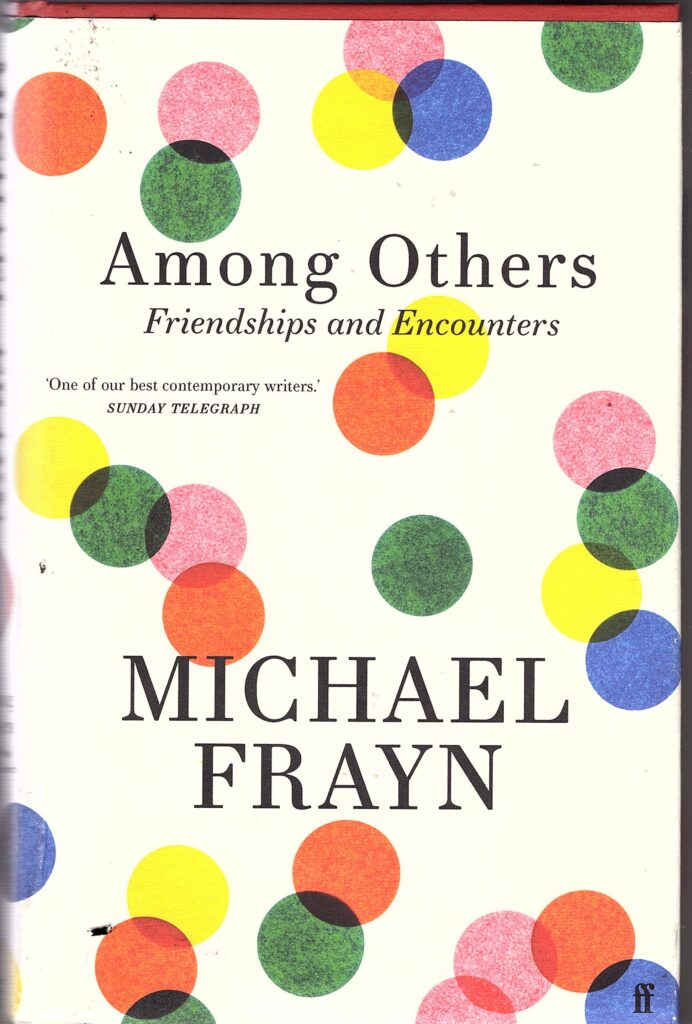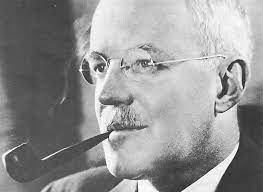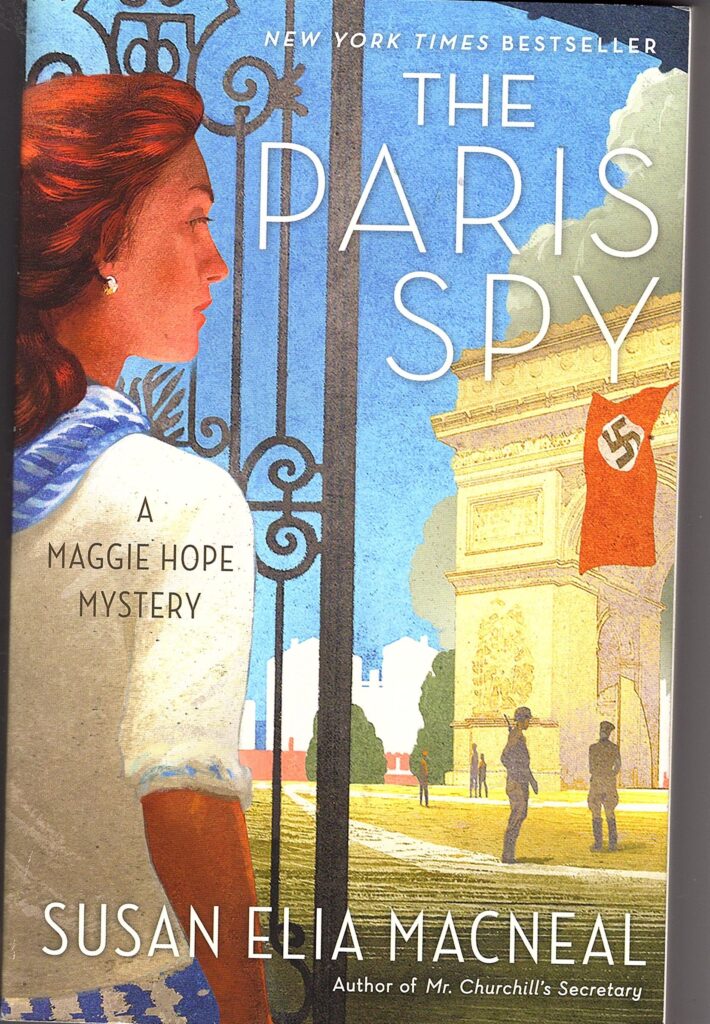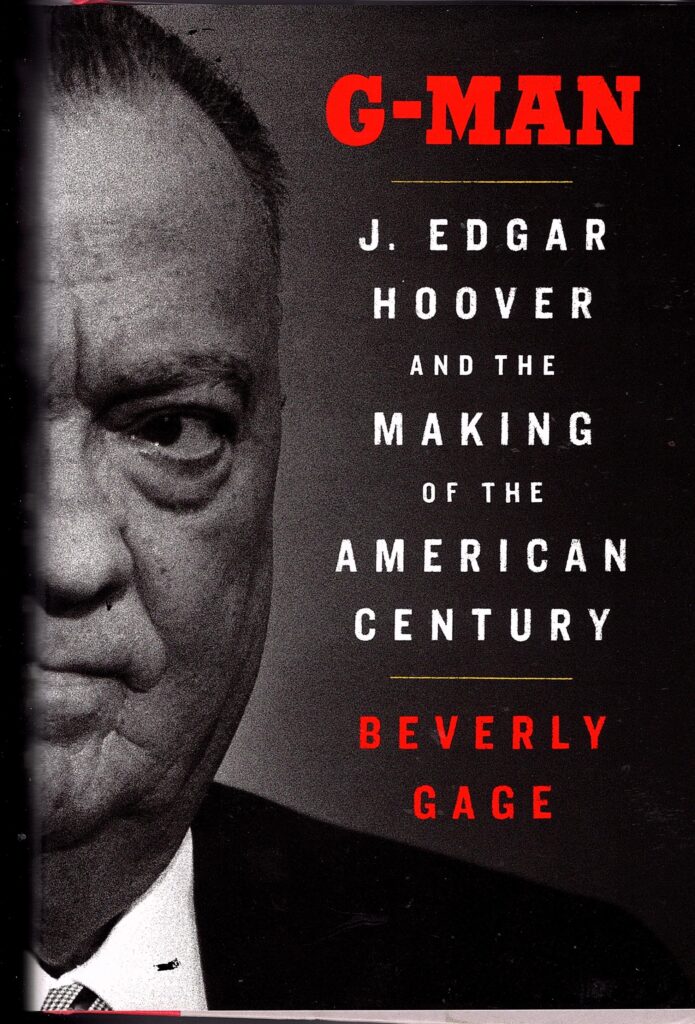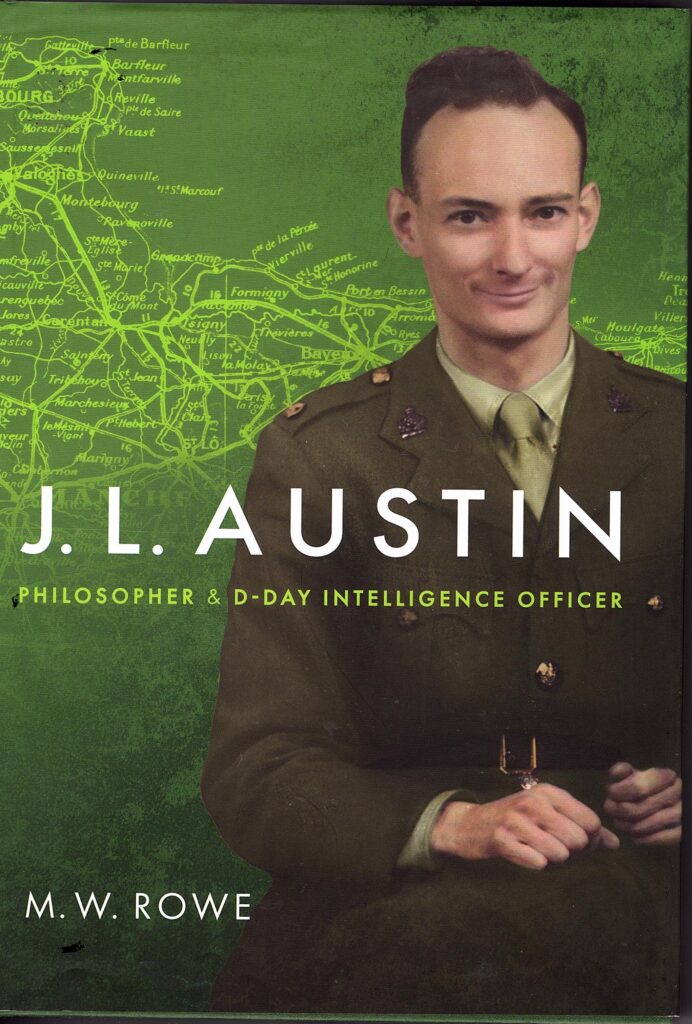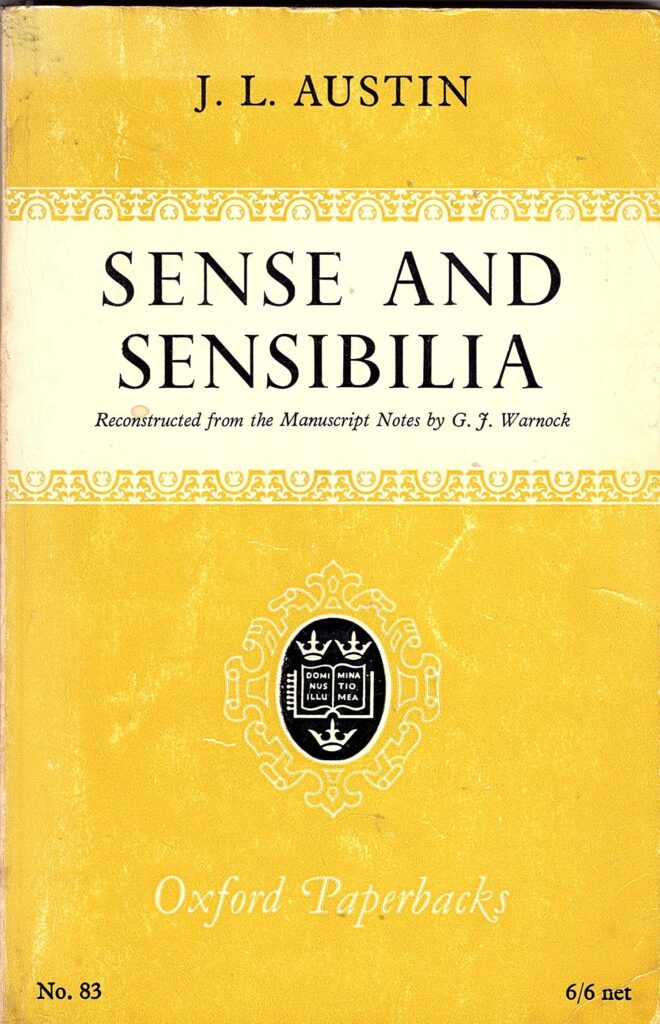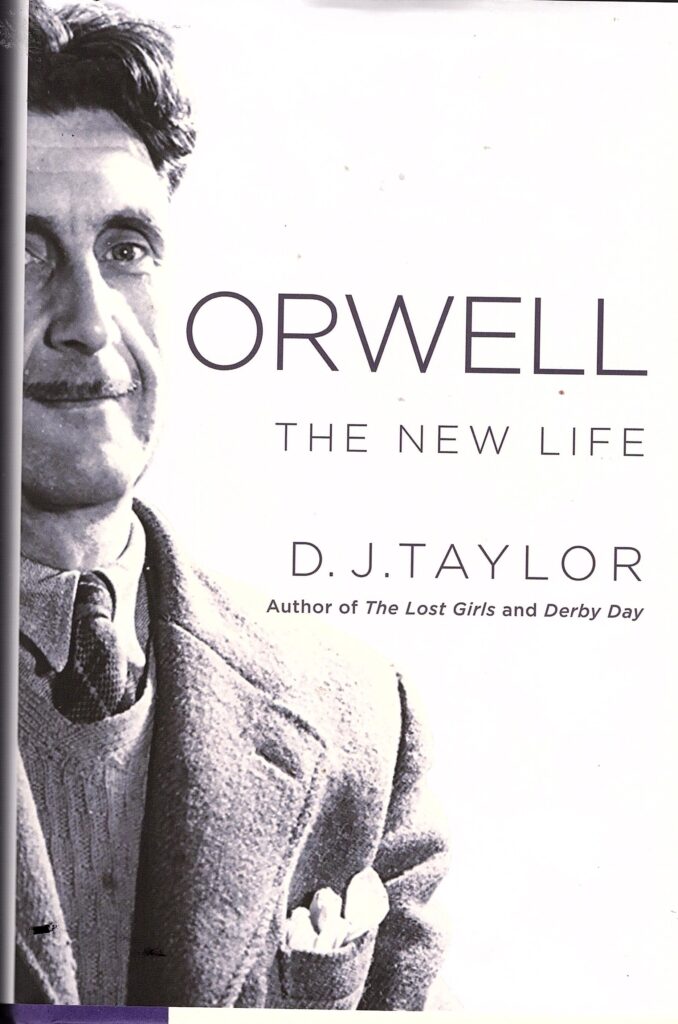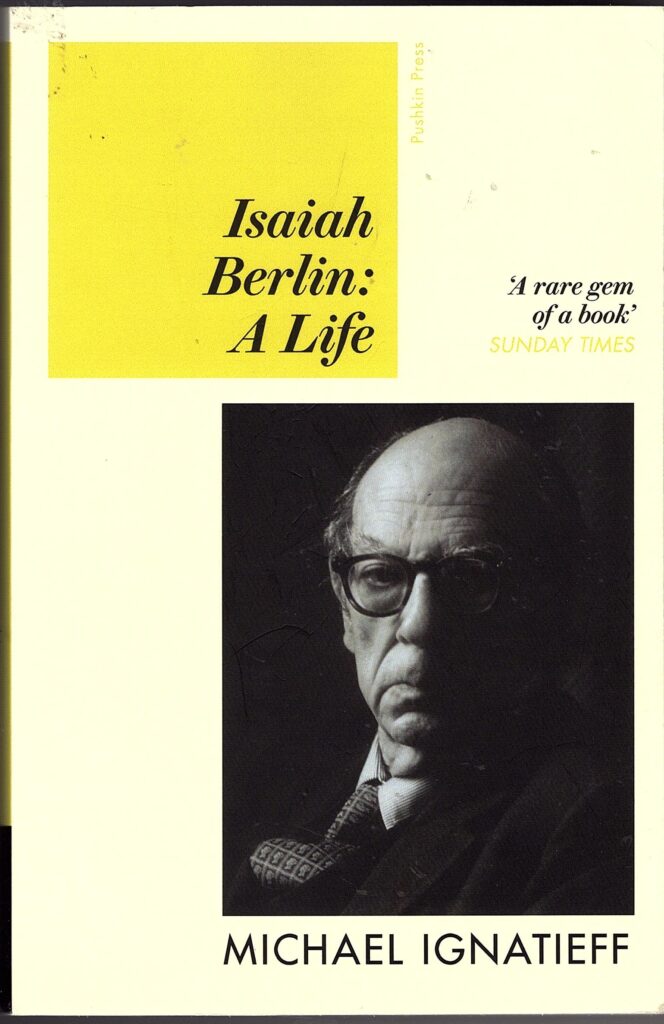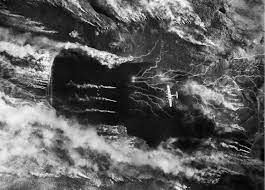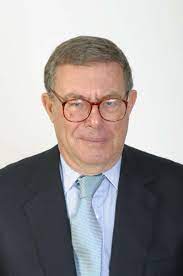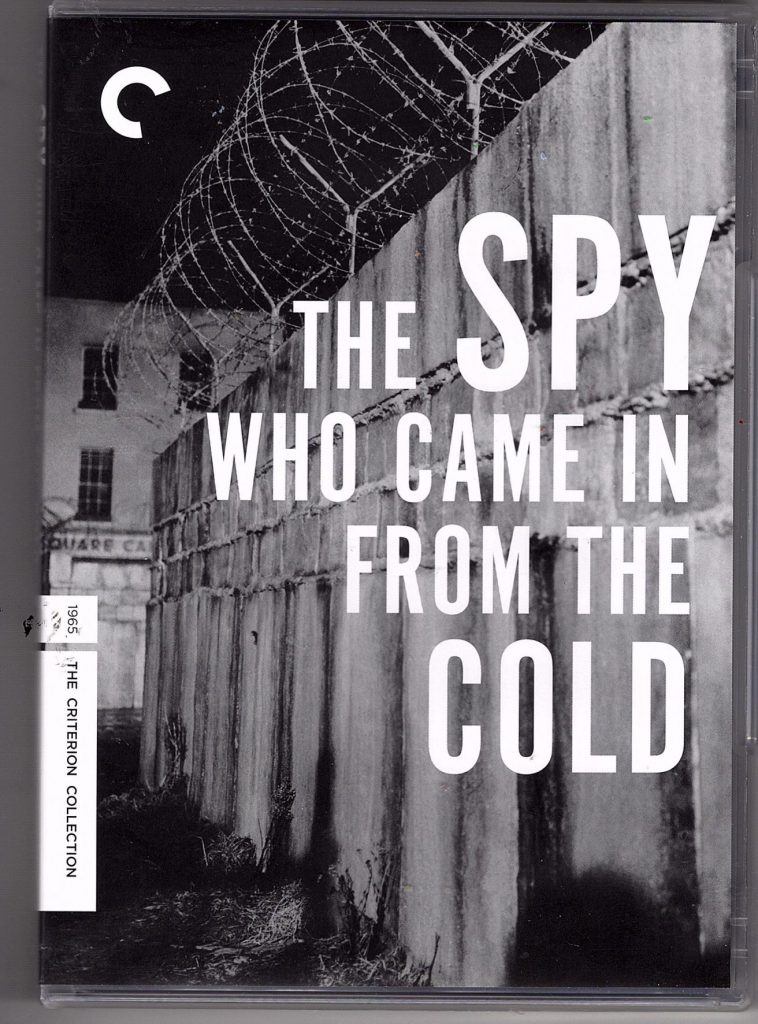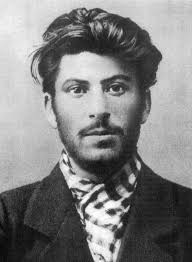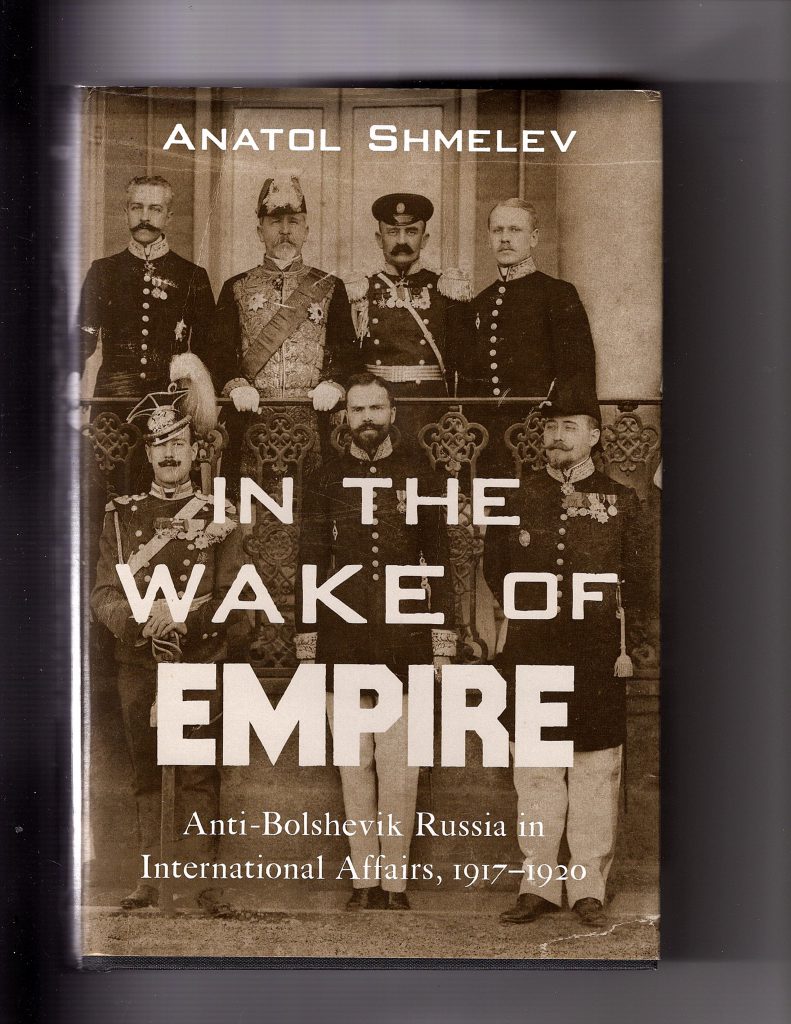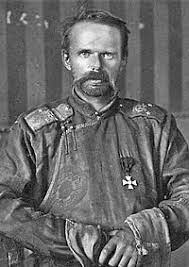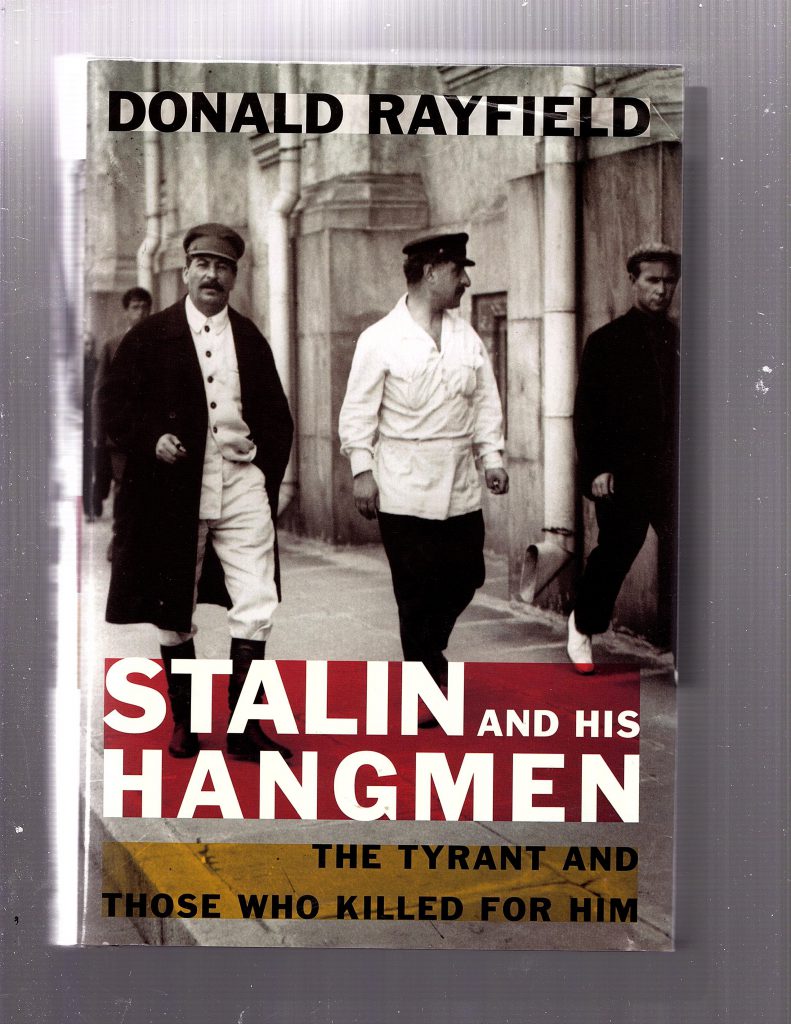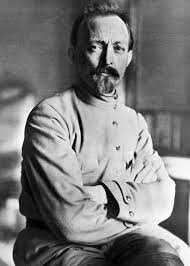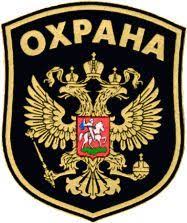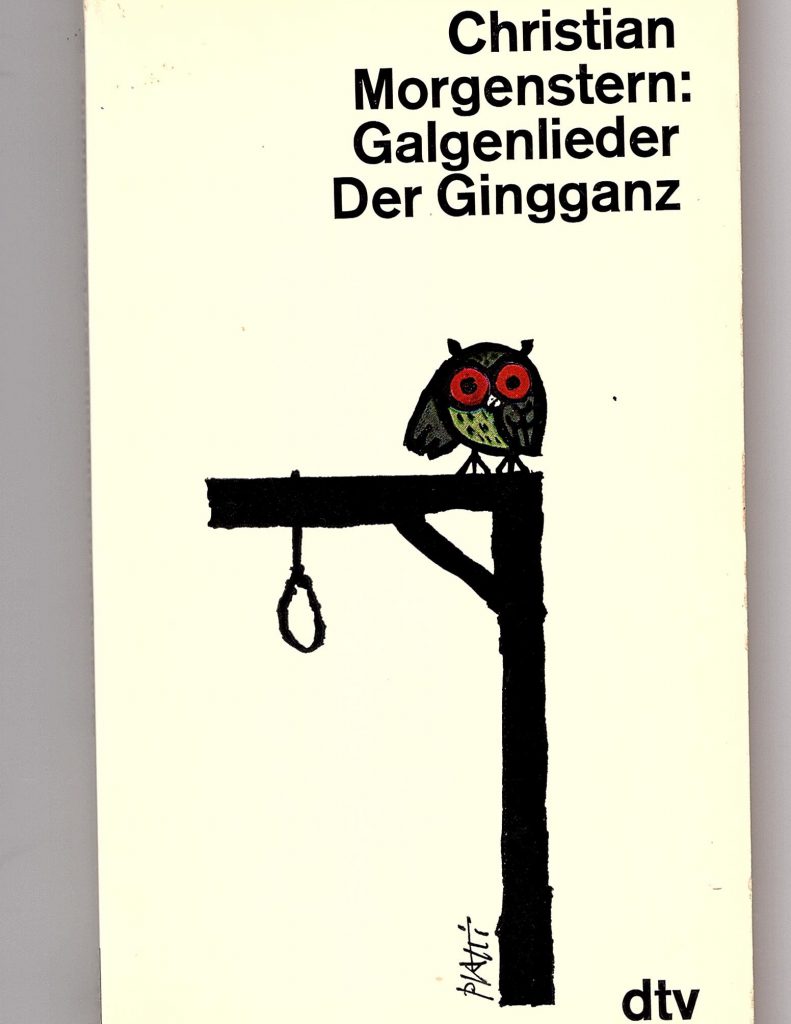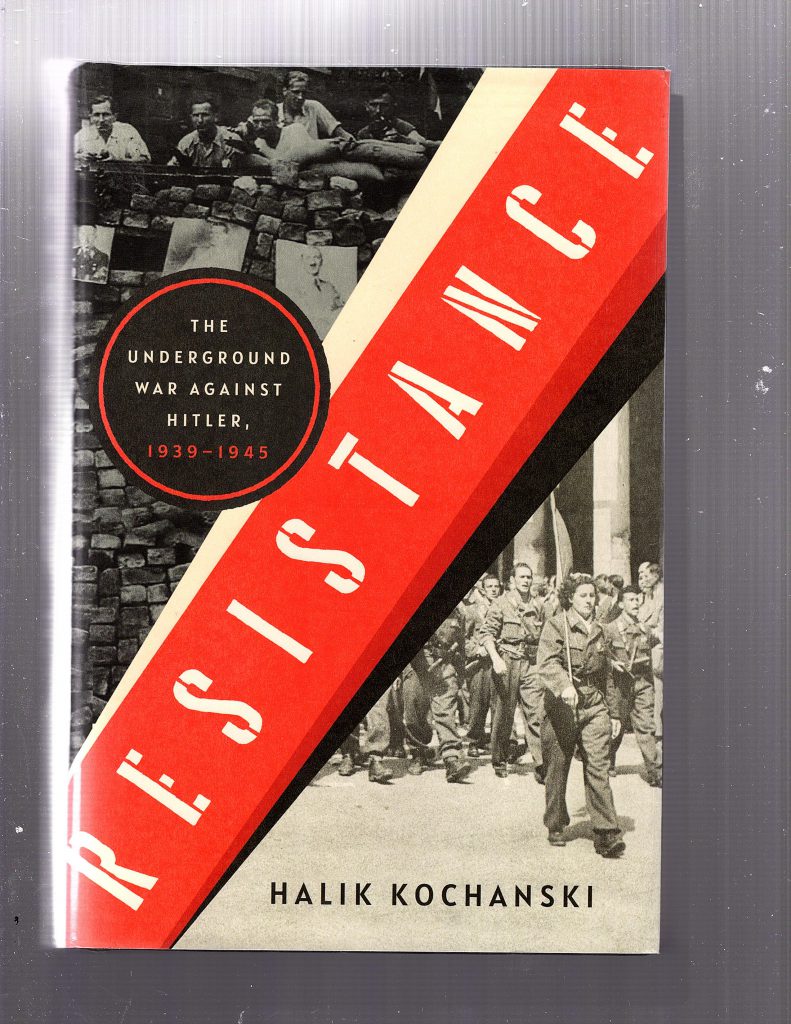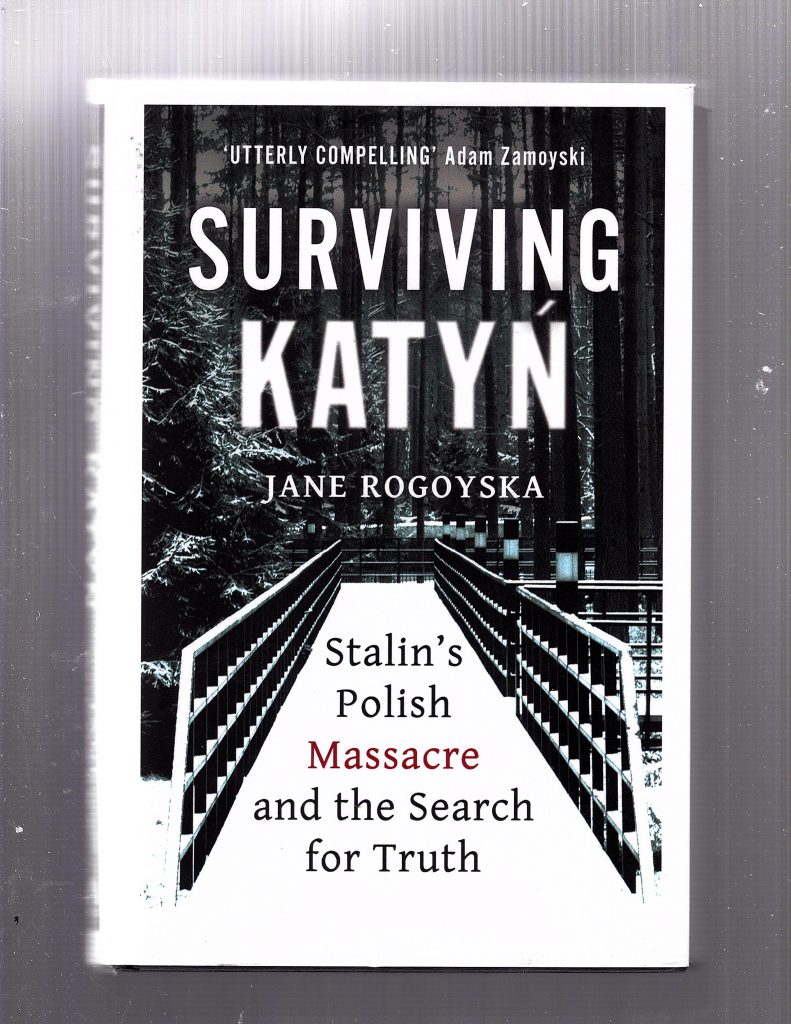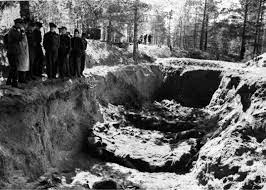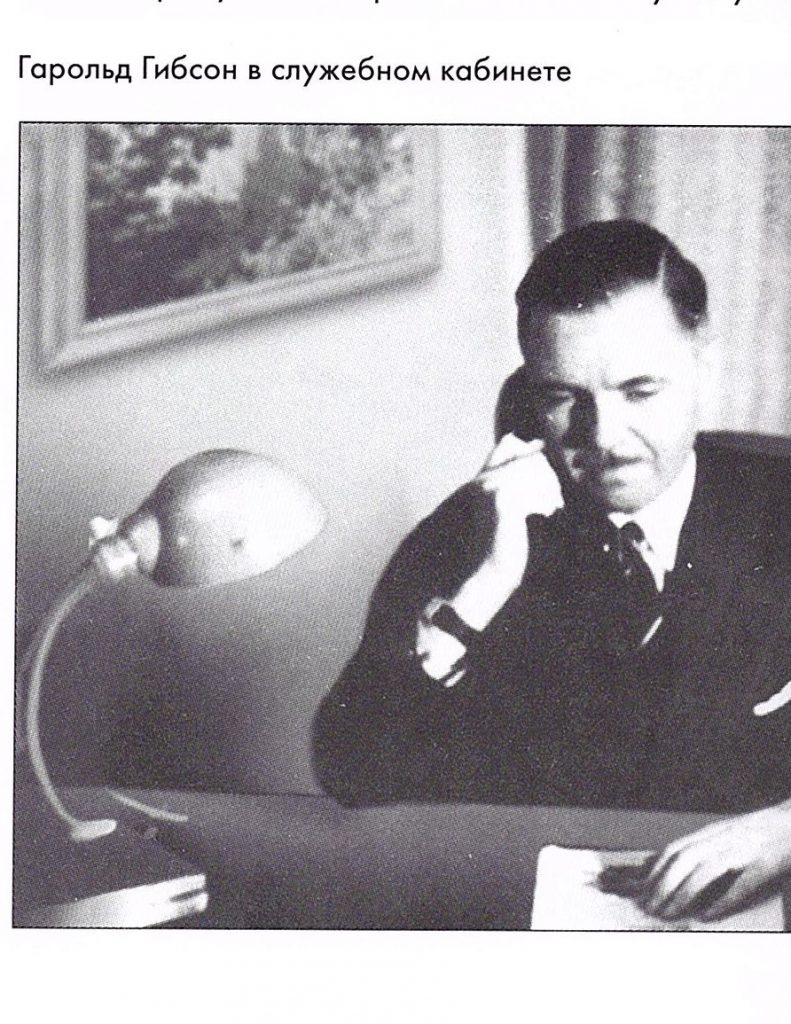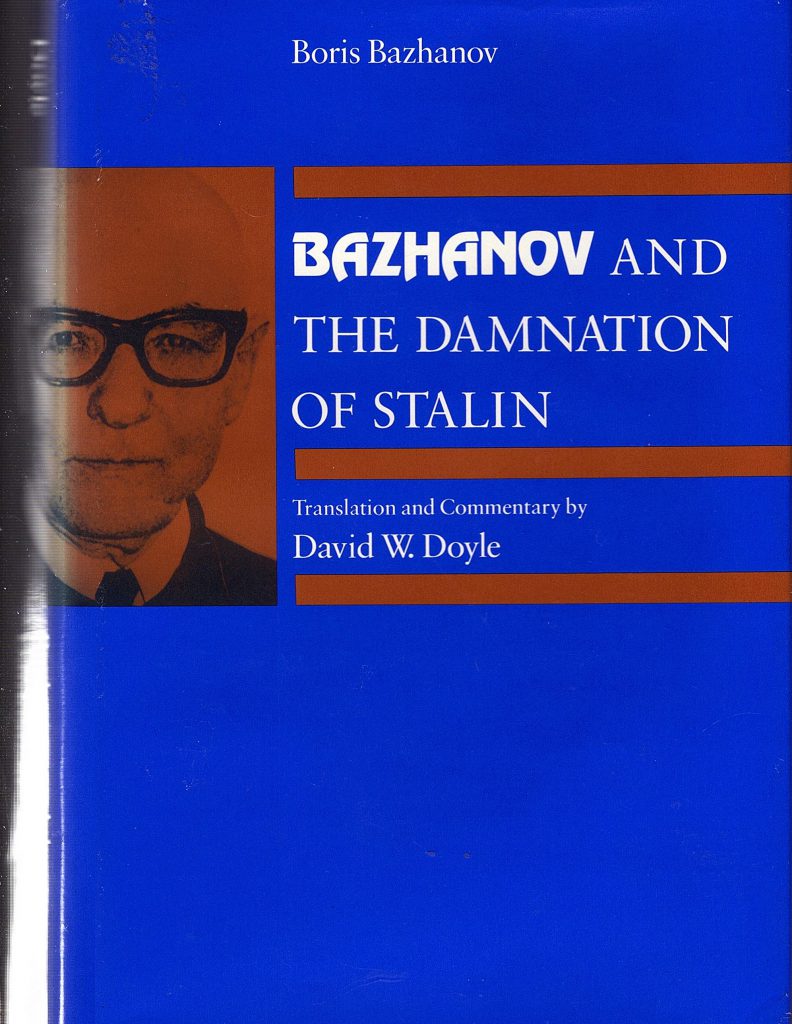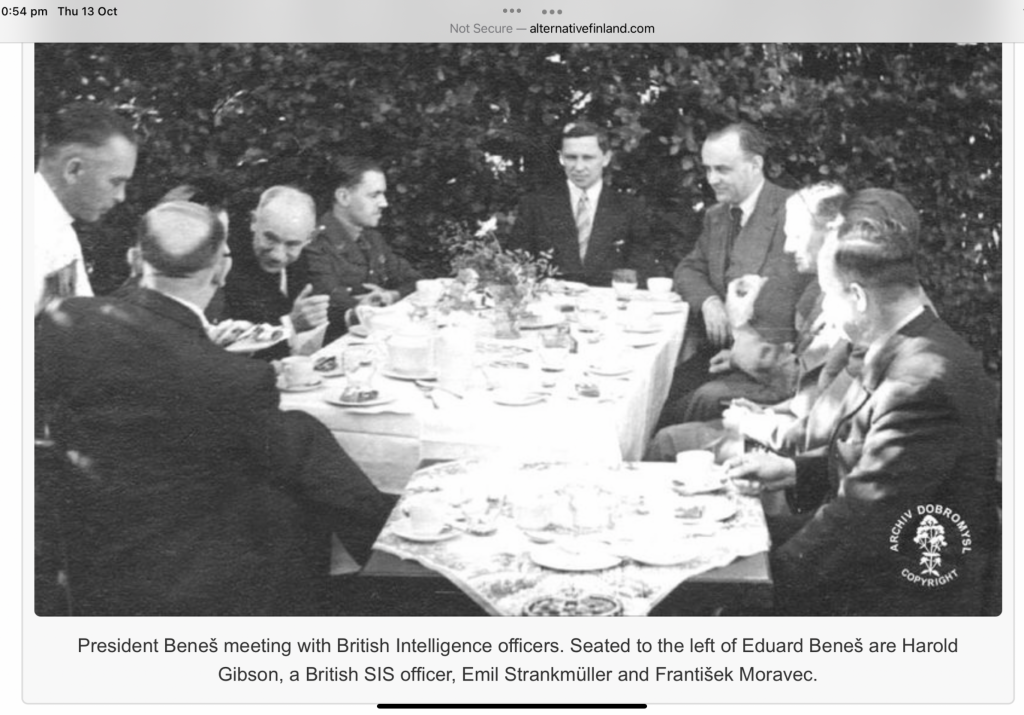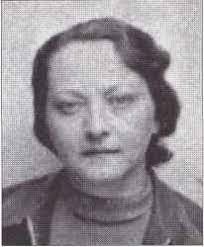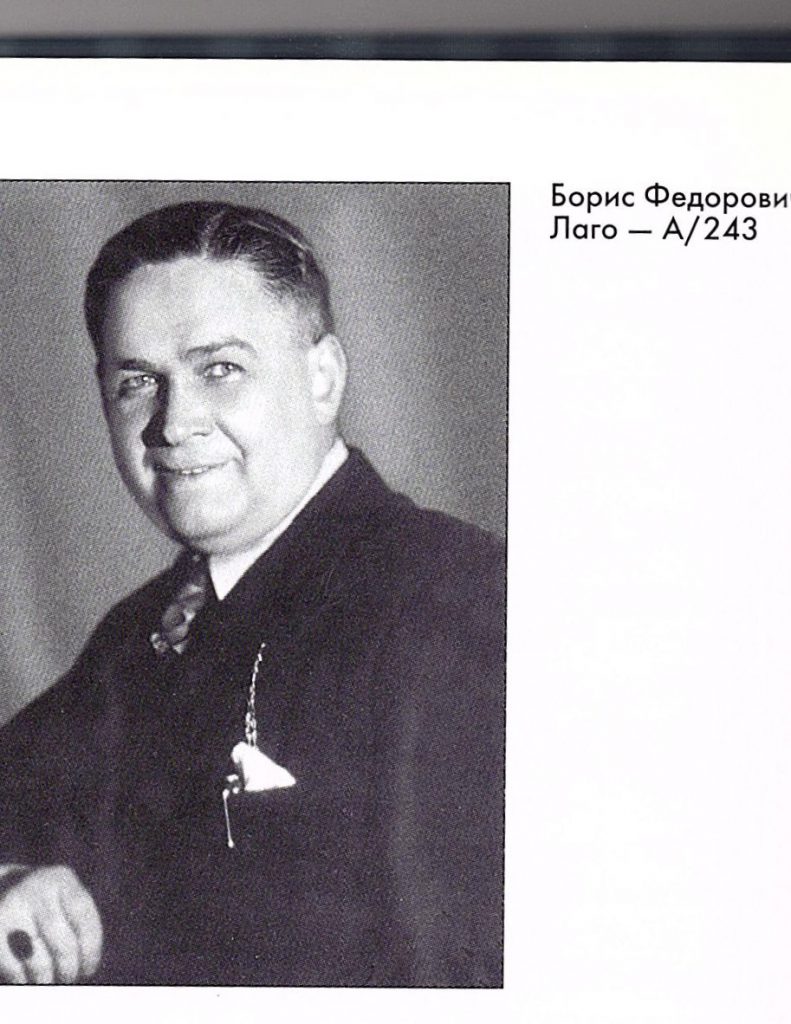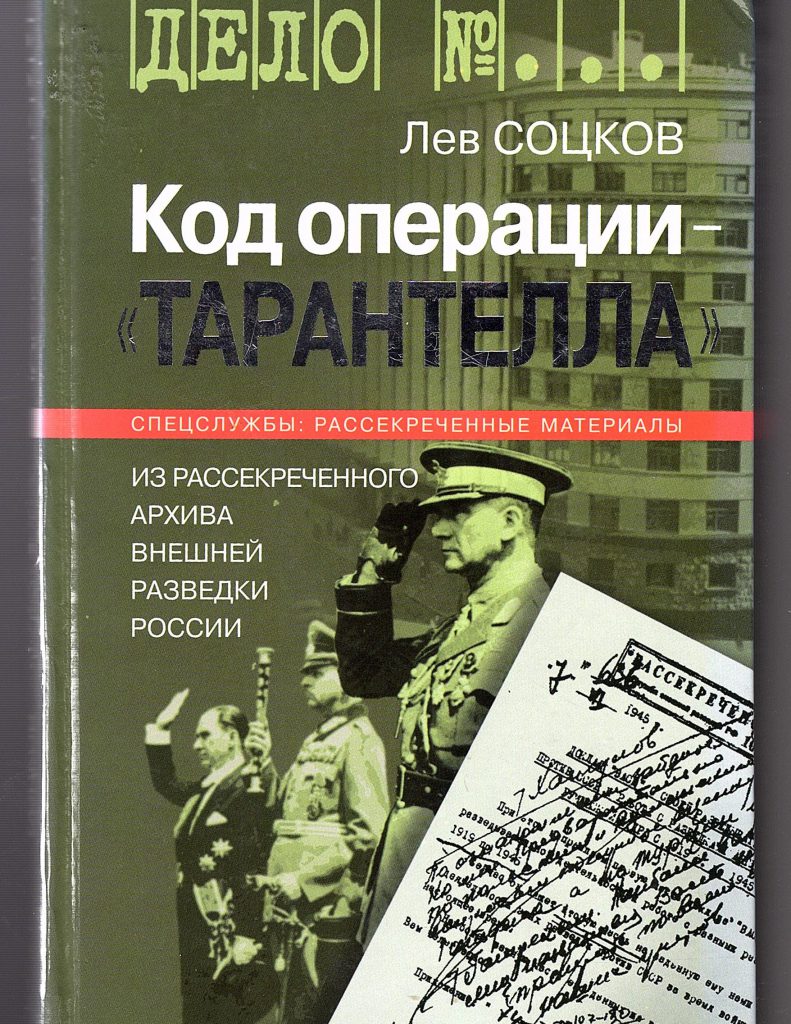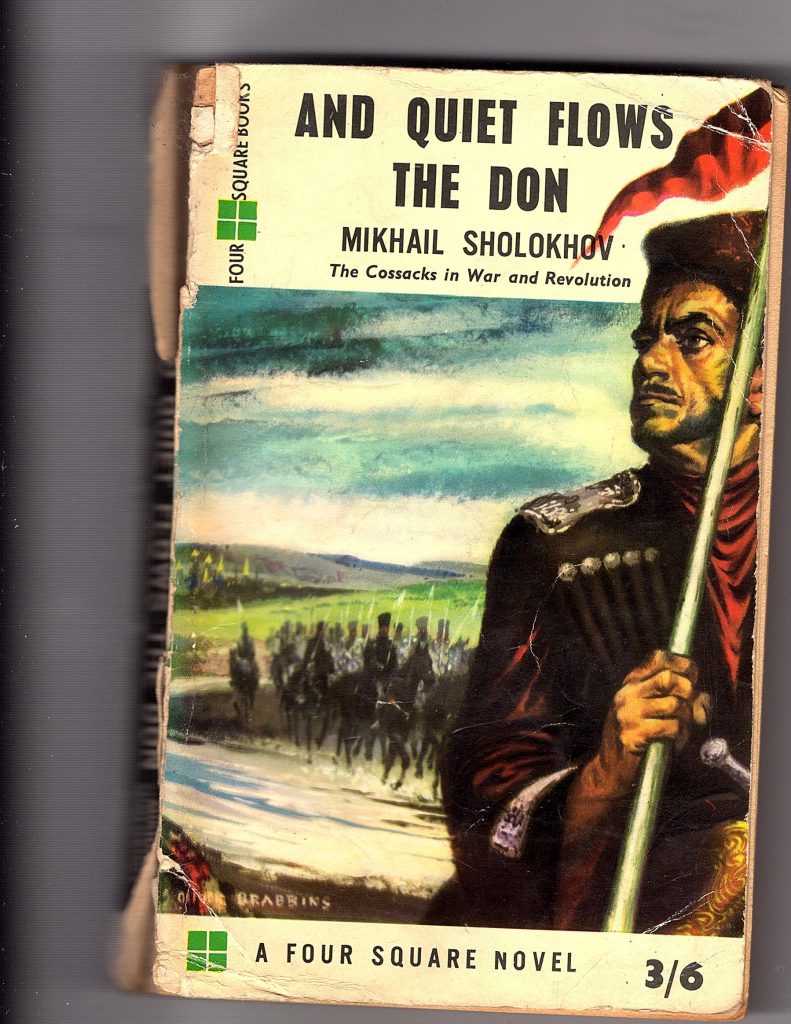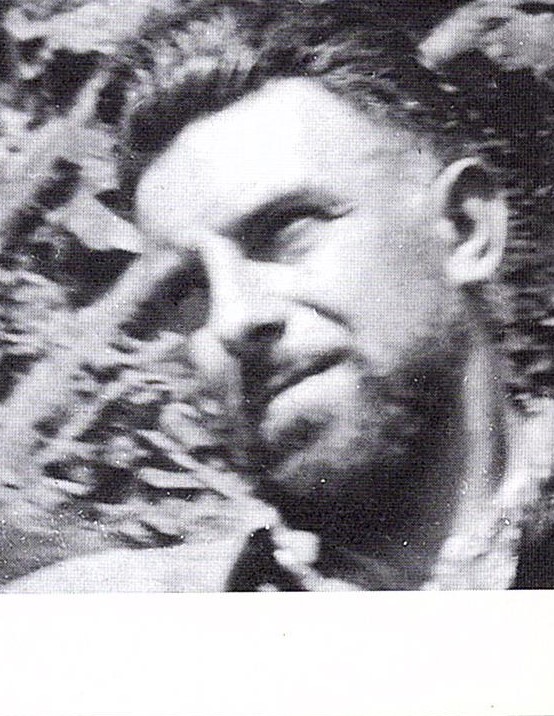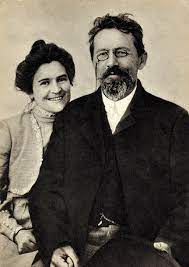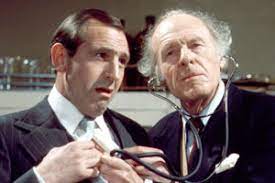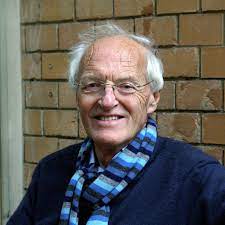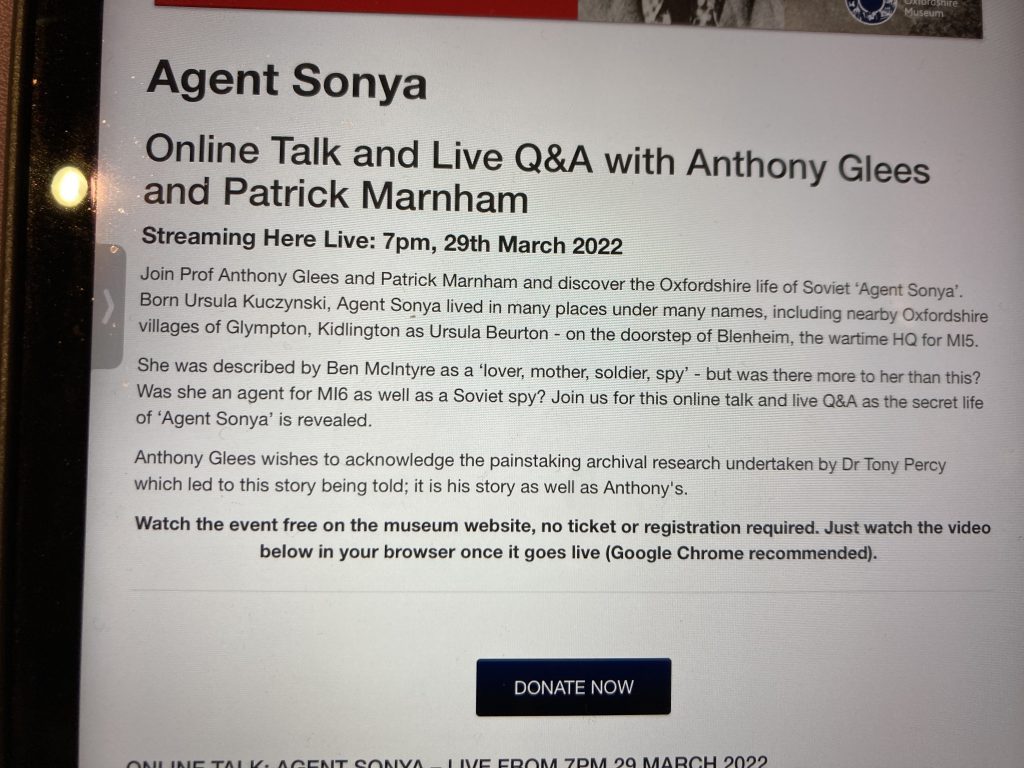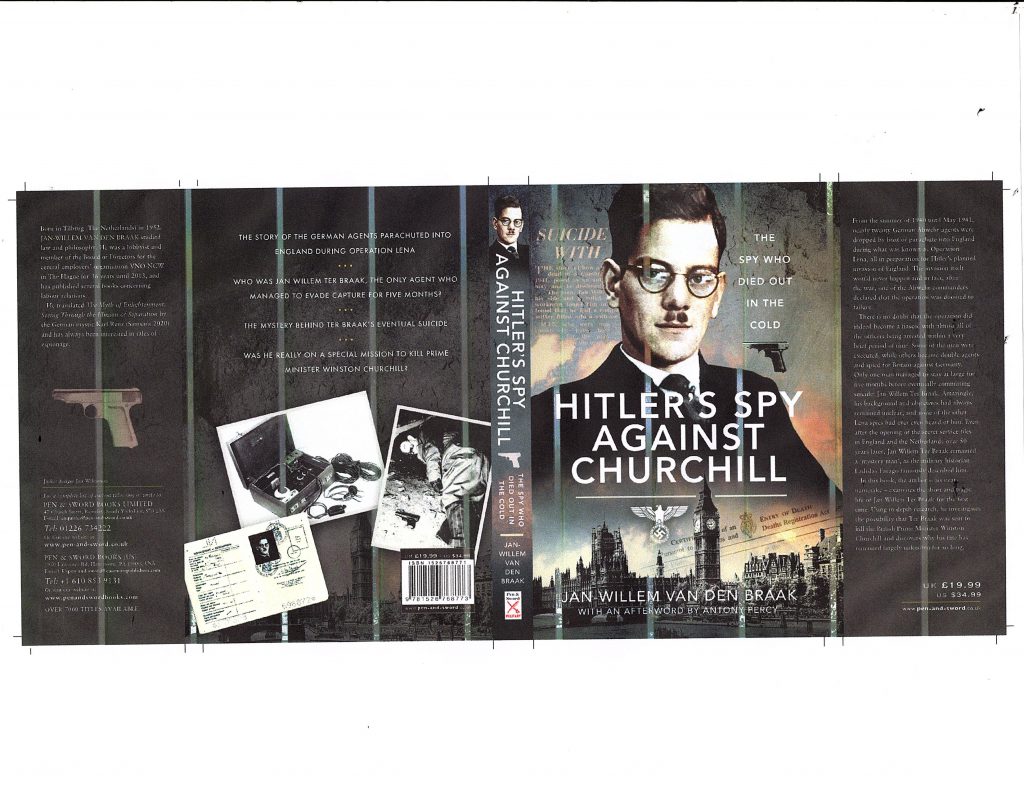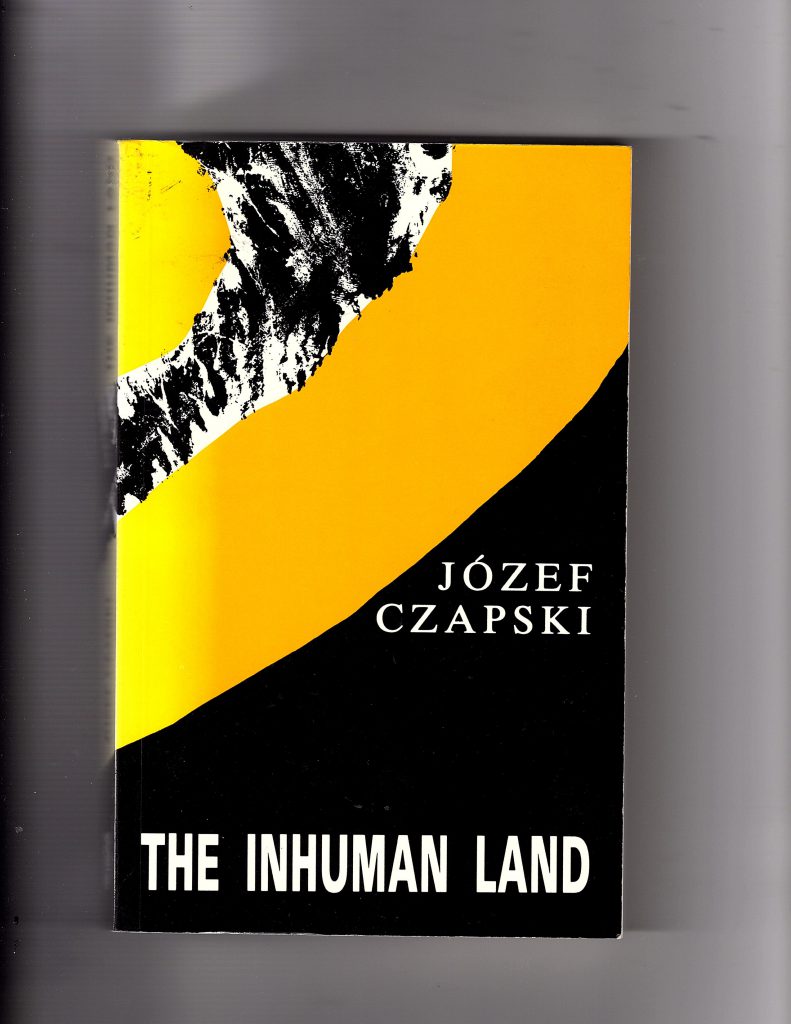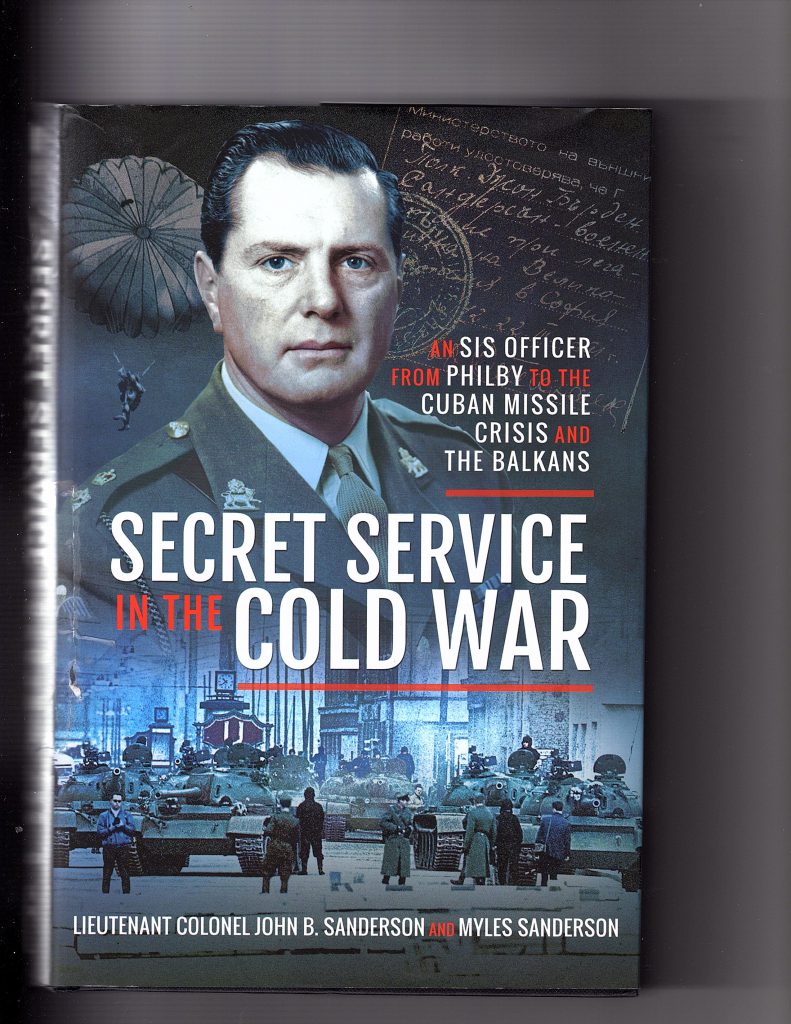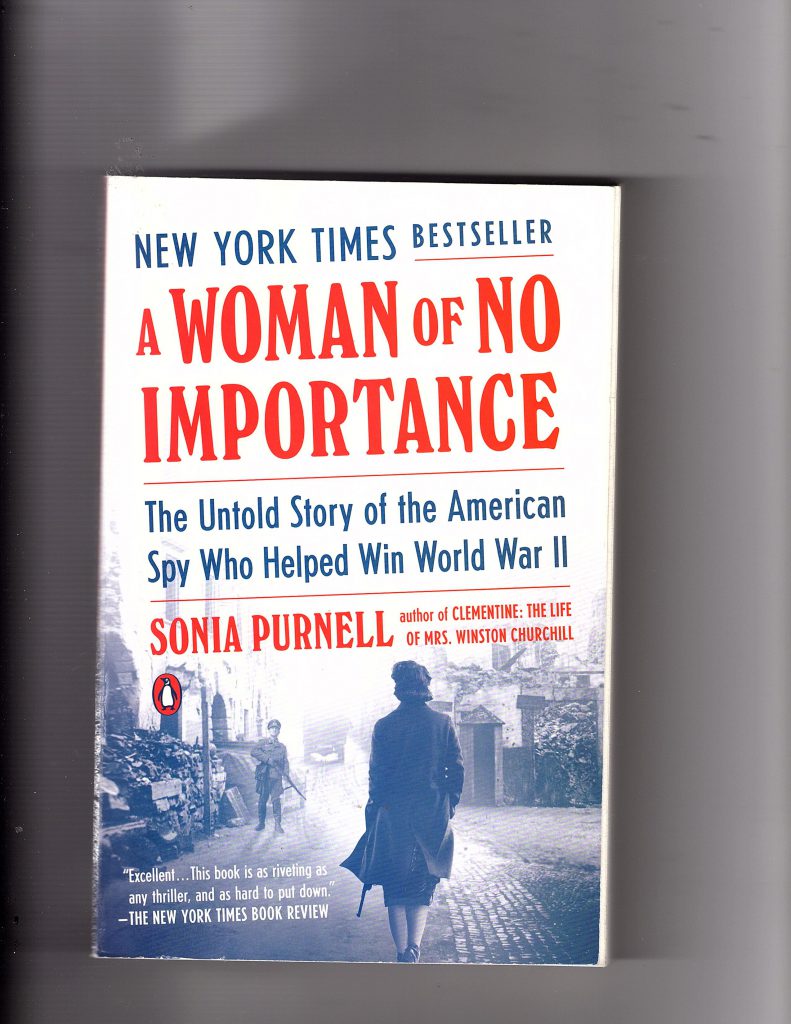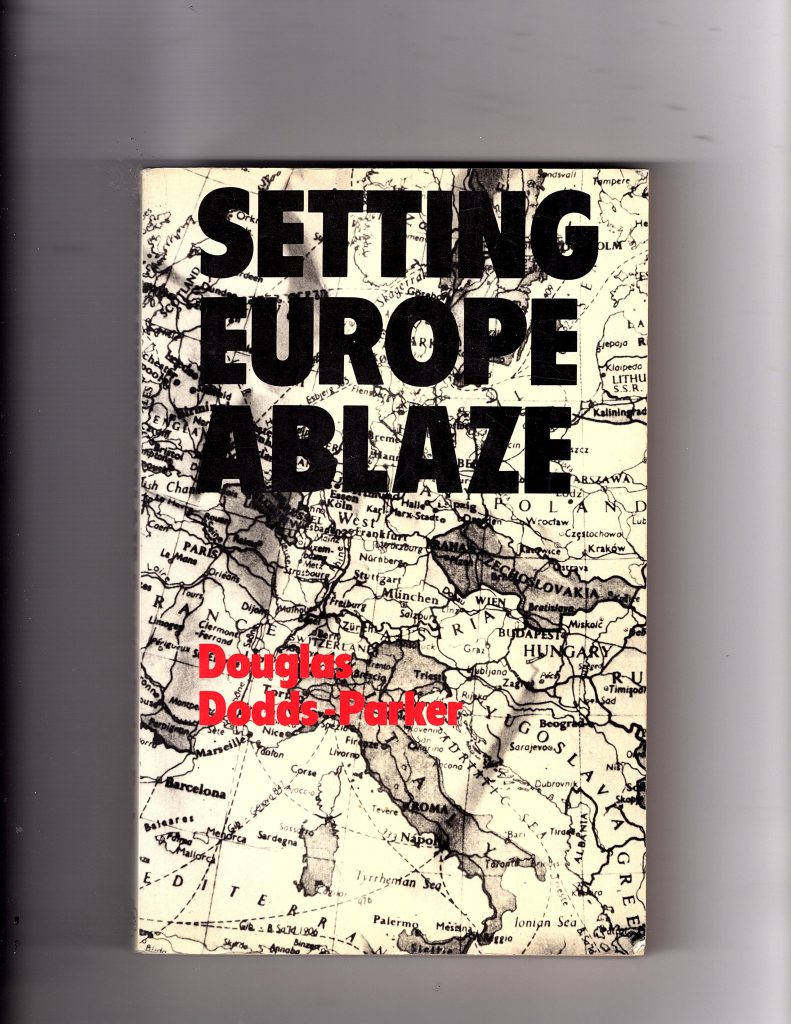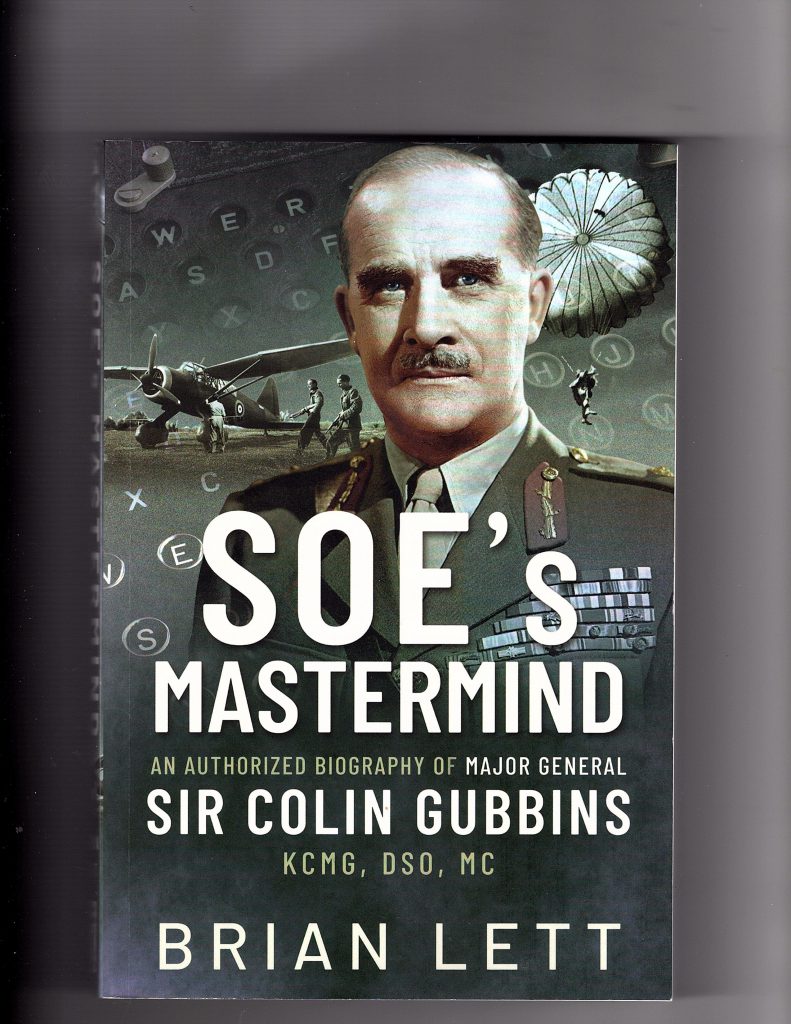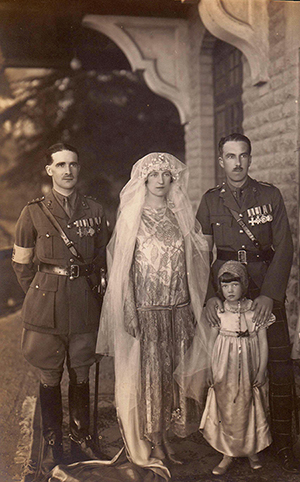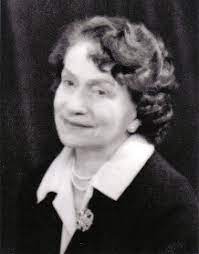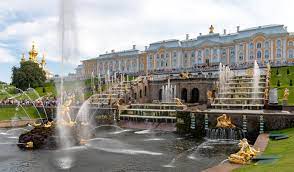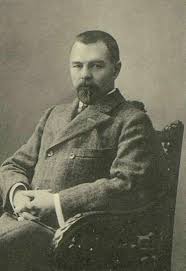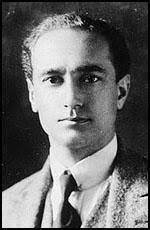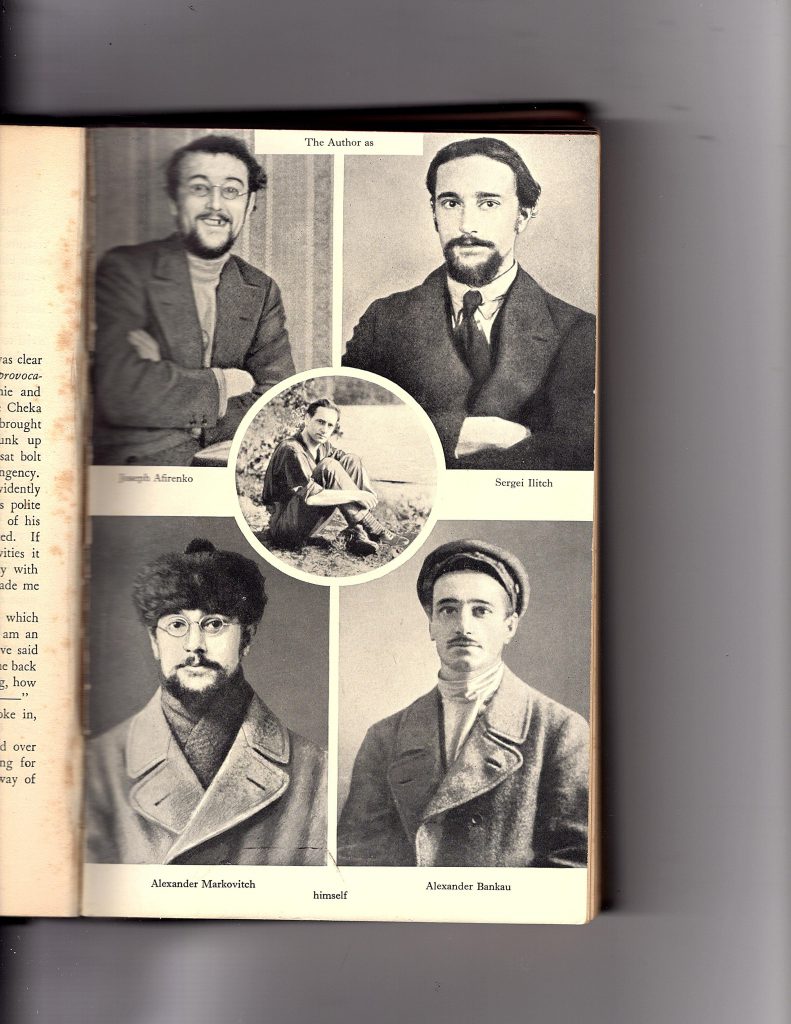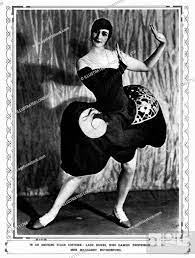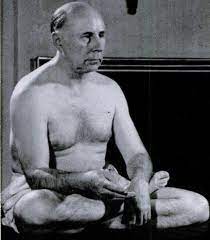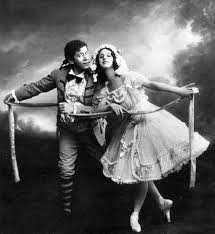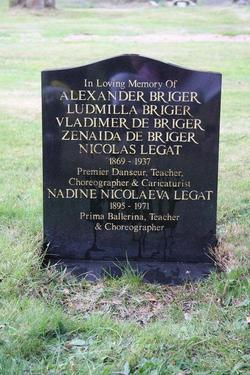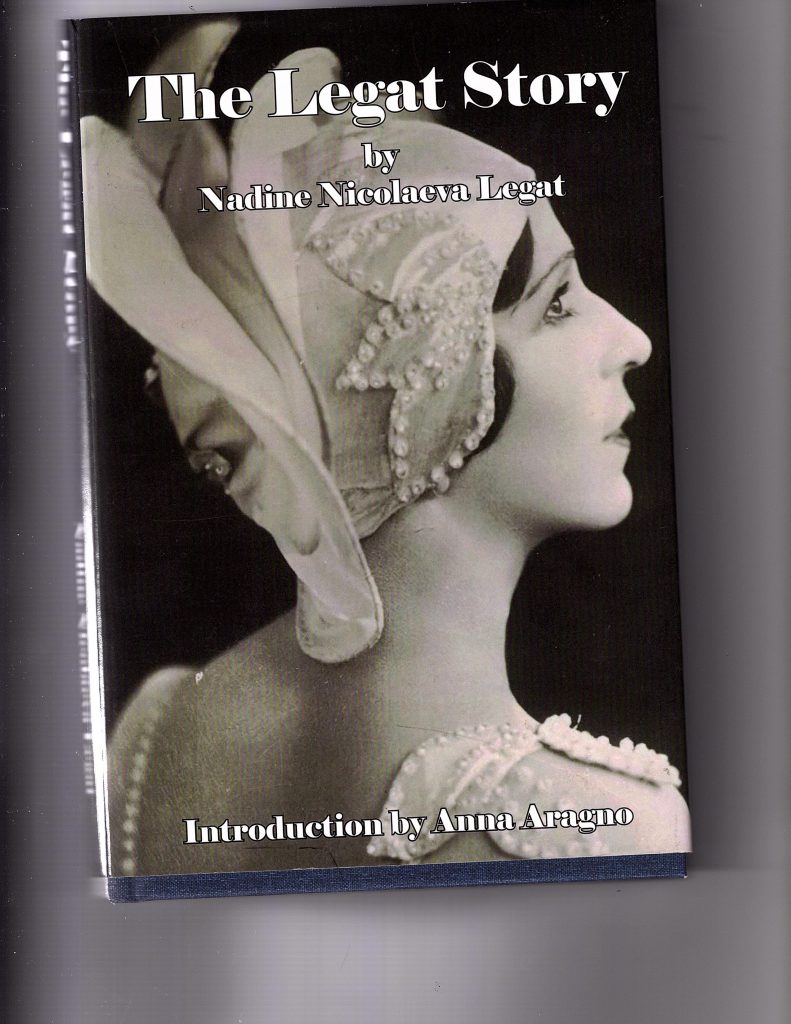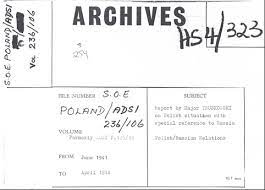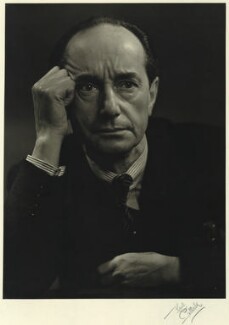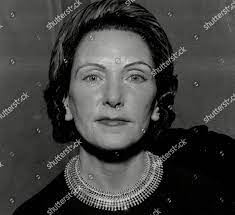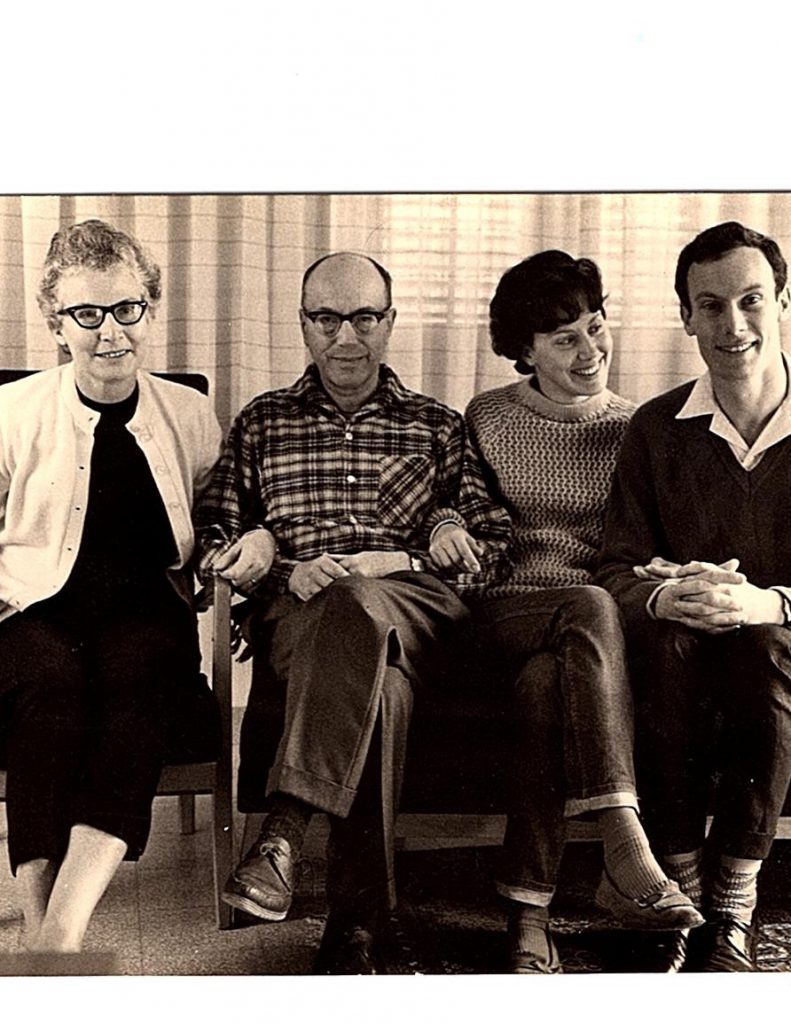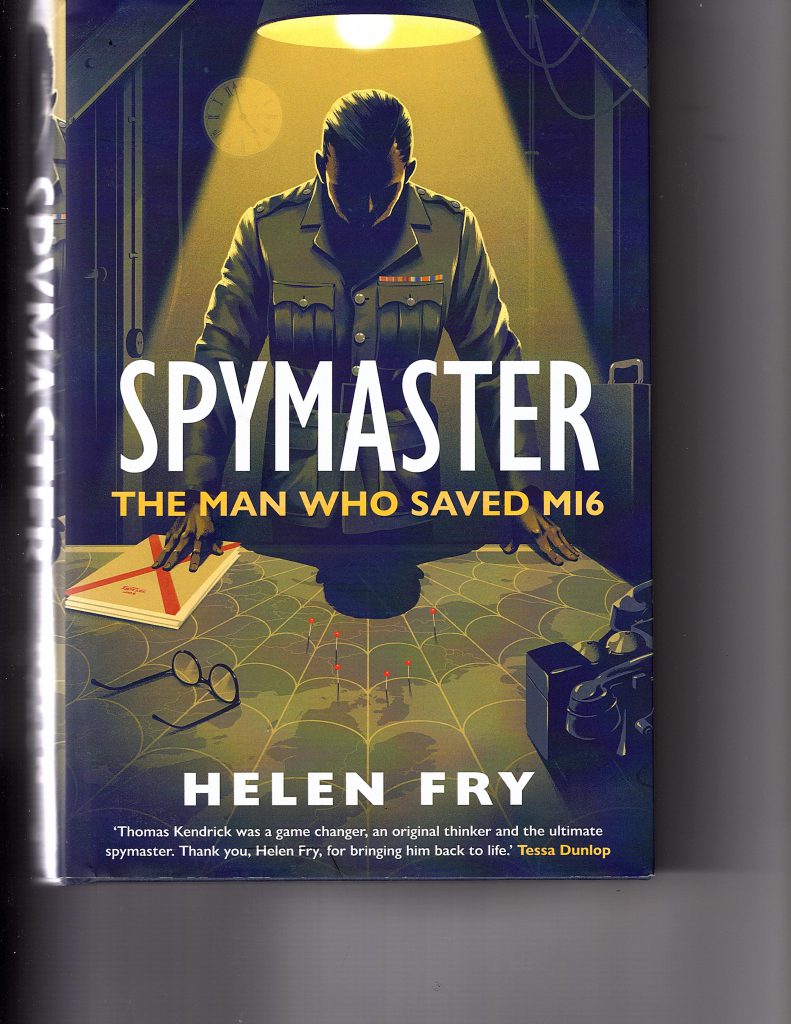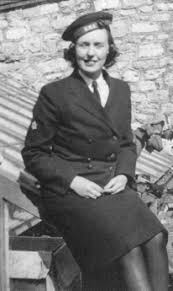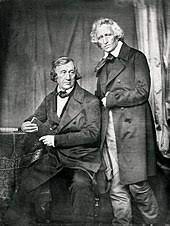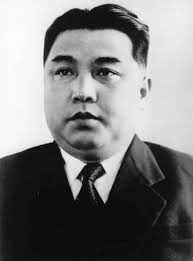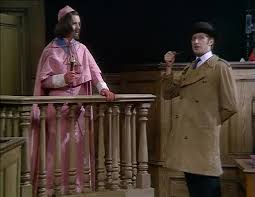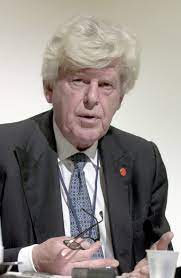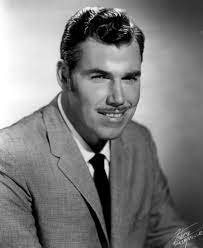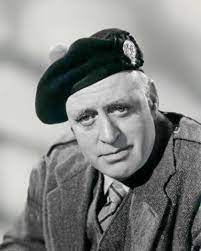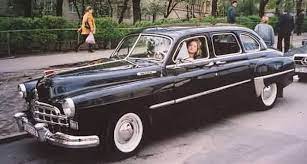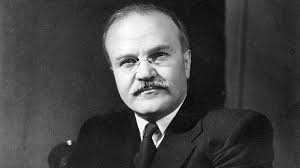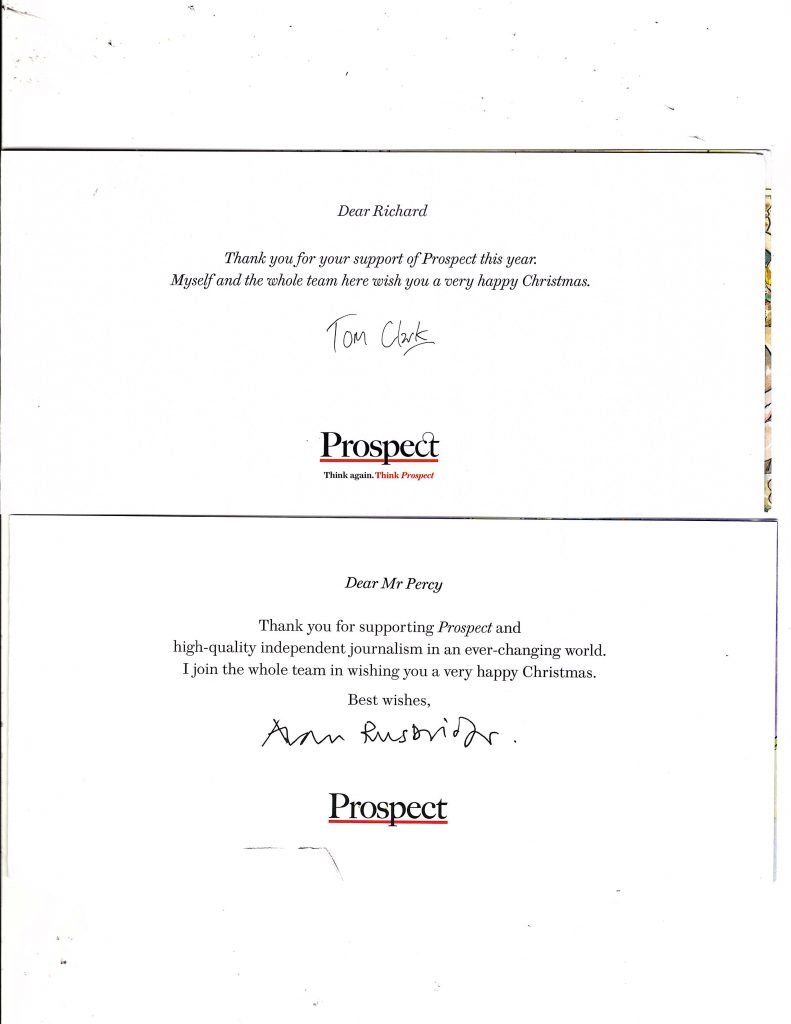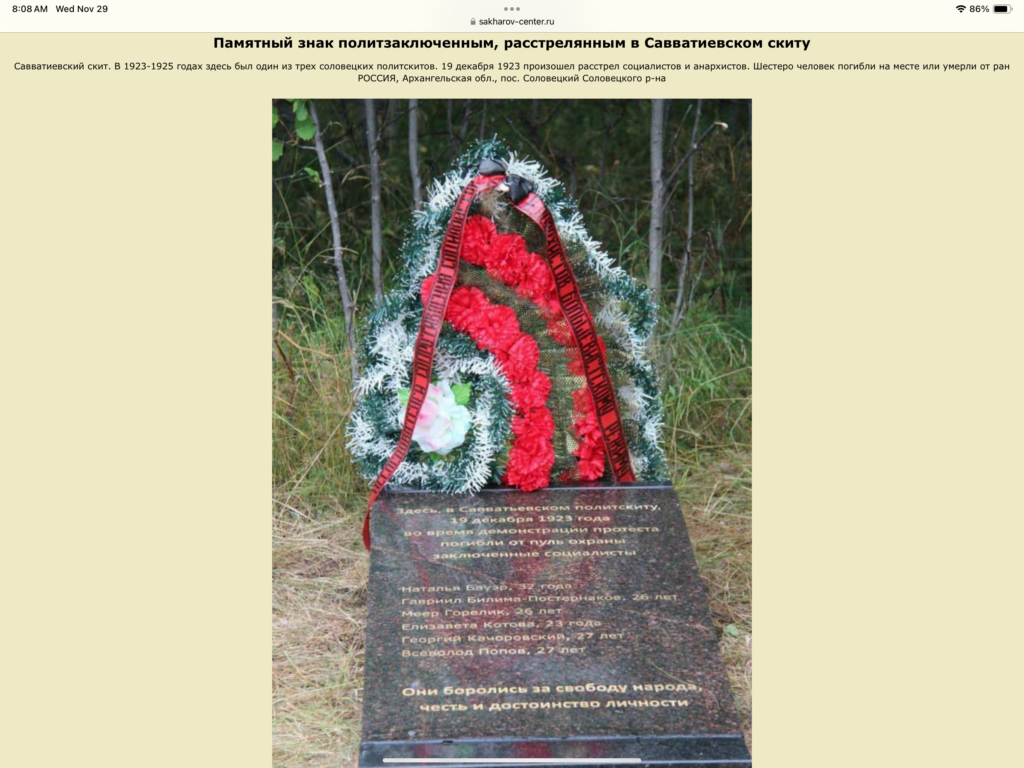
In Memoriam: On December 19, 1923, six prisoners were shot at the Savvatievsky monastery compound, which was located on an island in the White Sea and had been converted by the Cheka into a camp for political prisoners. The four men and two women, from ages 23 to 37, had staged an open protest about living conditions at the camp, and either perished on the spot, or died soon after from their wounds. The remembrance of this event is especially poignant since Memorial, the Russian organization that has striven to keep alive records of the crimes of Lenin and Stalin, such as this, has been shut down by President Putin.
While I wish all coldspur readers the compliments of the season, I warn them that this bulletin does contain some cheerless, even curmudgeonly, observations.
Contents:
- Personal Files at Kew
- Was Kim Philby a Bigamist?
- Hannah Coler’s ‘Cambridge 5’
- The Rejuvenation of Dick Ellis
- The Book Review Magazines
- Research Agenda
- ‘The Airmen Who Died Twice’
- ‘This I Cannot Forget’
- J. B. Priestley’s ‘English Journey’
- The coldspur Archive
- Mental Health
- Coffeehouse Talk
***********************************************************
- Personal Files at Kew
The Personal Files (PFs) maintained by MI5 represent a rich but often enigmatic resource. They are sometimes converted into a new series of identities in the KV/2 class, KV being the Reference for the Security Service (MI5). Thus most descriptors of individual KV/2 units will declare the number of the PF from which its content is assembled. Yet many PFs have not been released: there exists no master list of such files, but some of their identities can be easily detected since they appear as unredacted annotations made on the pages of many released files. Furthermore, the system used for PFs appears to have allocated numbers in sequential order, with the result that the approximate date of the creation of ‘ghost’ PFs can be quite readily determined.
For example, coldspur readers will by now be familiar with the PF number allocated to Litzy Philby, 68261, since handwritten inscriptions made on items in the Tudor-Hart files (and in others) request that a copy of certain items (letters, memoranda, etc.) be placed in her file – which she may well have shared with her husband. Thus a stab could be made at establishing when her file was opened by studying the dates of released files of PFs holding numbers close to hers. In fact I have started to create a spreadsheet in which I record the PF numbers and their corresponding KV/2 identities, and if a PF has not been released, I enter it in sequence with a reference to the KV in which it appears. I thus have codes for a) unreleased, b) released but undigitized, and c) released and digitized entries, and, if possible, a date on which the file was created. (Undigitized files have to be inspected on site, or, since I have not travelled to Kew for several years, to be photographed professionally by my London-based researcher.)
I have found anomalies. For instance, it appears that a bevy of PFs was created after the disappearance of Burgess and Maclean, with numbers allocated, as the investigation gathered steam, to suspected associates as well as the escapees themselves, such as Philby (PEACH), Blunt (masked as BLUNDEN because of his wartime employment by MI5), and Goronwy Rees (who had volunteered vital information soon afterwards). Yet the suggestion that the collection of material was initiated at this time (May-June 1951) is belied by the fact that the released file on Rees (for instance) contains material that derives from the 1930s. A reference to Philby’s file (PF 604502), dated November 1946, can be seen in the file of the Sicherheitsdienst officer Protze (KV 2/1741). That would suggest that pre-existing PFs on some of these characters had been maintained for some years, but that they were suppressed, for reasons of ‘security’, and that the appearance of a completely fresh inquiry was promoted by the creation of ‘new’ files that may have incorporated older material, and may even have been in existence for a while.
Thus a large number of identifiable but unavailable files exist (unless some of them have been destroyed). Why have they not been released? It could be that the authorities are embarrassed – by the unnecessary surveillance of persons who were of no danger whatsoever, or by the ineffective observations of individuals who were clearly guilty of subversive or treasonable activity. Sometimes specious reasons about protecting family members are given. (I have recently started a project to list all the archival material related to Guy Burgess that appears in the National Archives Directory, consisting of two or three hundred discrete items, mostly in the Foreign and Colonial Office records. It is a shocking story – with many items permanently retained, and many closed but due for opening in the next few decades, including some not to be released until January 2073 (!) – that I shall report on fully in a future coldspur bulletin.)
I have a very pragmatic and inquisitive approach to interpreting all this. One of my on-line colleagues (who has a background with British intelligence) claims that he knows how the system works, and that any anomaly he finds in the records is due to mistakes made by officers, or by the custodians of the Registry. You might call his methodology an a priori interpretation. Since I have no preconceived notions of how the system was designed and implemented, I am a little more sceptical. I tend to regard all manifestations as features of the system, supplemented by possible attempts to cover tracks. You could call my approach an a posteriori one.
One of the anomalies is the fact that certain individuals were given separate classifications, under the KV/6 reference instead of KV/2, representing so-called ‘List’ files. An example is Georg Honigmann (KV 6/113 & 114), whose source is given as L169/65. The Kew Catalogue describes this category rather obliquely and circuitously in the following terms: ‘relating to investigations carried out on related individuals or organisations (for example, investigations into SOE personnel forming part of the SOE ‘list’)’. That is not very helpful. In what way, for instance, would Honigmann have been considered part of a ‘list’ when he arrived in the UK in 1931? I am looking out for other persons of interest in the KV/6 series in an attempt to derive a pattern, and have already collected a small but interesting set.
My study has been complemented by the inspection of some archival material concerning the Registry itself, namely KV 4/21: ‘Report on the Operations of the Registry During the War 1939-1945’. DDO (‘R.H.’, namely Reginald Horrocks) started by describing the state of the Registry in June 1940, when ‘the organization of the service had all but broken down’. The Registry had been allowed to lapse ‘into a most lamentable position’. It seemed that inertia had encouraged information to be gathered in ‘subject’ files, which made extraction of intelligence on individuals particularly difficult. He summarized the problem as follows:
The basic system of filing was inefficient and inelastic. While a diminishing number of individual files were made the records of those individuals on which interest centred (Aliens, Right and Left Wingers) were filed on a subject basis (i.e. Communists in Northumberland). [‘Seriously?’ – coldspur] The effect was, that to obtain complete information regarding an individual several files were needed, many of which were required by other Offices for other individuals. So few obtained the files they needed and Officers’ rooms were stacked with unanswered correspondence and with files all awaiting other files which could not be obtained. Personal files were classified in series, this being a quite unnecessary complication in the process of file making.
Happily, this mess was rapidly cleaned up, and new systems were introduced. Unfortunately, a bombing raid in September 1940 destroyed some of the records of the new Central Index, but its reconstruction was completed by June 1941. According to Jack Curry, this extended period of turmoil, which severely affected morale, was brought to an end only when Petrie approved Horrocks’s scheme. The former chaos, however, may help to explain why searches were often unsuccessful when they should have uncovered incriminating material. Whether the ‘subject’ files corresponded in some way to ‘List’ files is not clear however. The Kew rubric on ‘Lists’ refers, for example, to SOE, which was not created until this exercise was under way. The fact that Georg Honigmann remained in a ‘List’ file, and was never granted a Personal File, may indicate that he was of no particular interest. On the other hand, an alarming note in the report states that ‘In 1940 a number of the old files of no current interest were destroyed’. [How did they know the files contained nothing of interest?] Perhaps the survival of Honigmann’s file is a lucky accident.
Lastly (for the time being, anyway) I refer to one critical file revealed by this practice. In a recent post (https://coldspur.com/kim-philby-always-working-for-sis/ ) I expressed my incredulity that, if a file had been opened on John Lehmann when he travelled to Vienna as an obvious left-winger, one would not have been opened on Kim Philby. Lehmann’ s PF number is 41490, and the first entry in it is dated October 1, 1932. In fact, MI5 picked him up after he was mentioned in a letter by Gerald Hamilton, a few months before he went to Austria. The highly dubious Peter Smolka (later to be named Smollett) had a file opened on him when he arrived in the UK in November 1930. Its number is 39680. And when Smolka asked the Home Office to allow him to set up the Intercontinental News Agency with his colleague H. A. R. Philby, in November 1934, a handwritten note on the letter (visible at ser. 62a in KV/2 4167) indicates that the aforementioned Philby has a PF numbered 40408. That would appear to show that a file on Philby was probably started during 1931, when he was up at Cambridge . . . I wonder what happened to it.
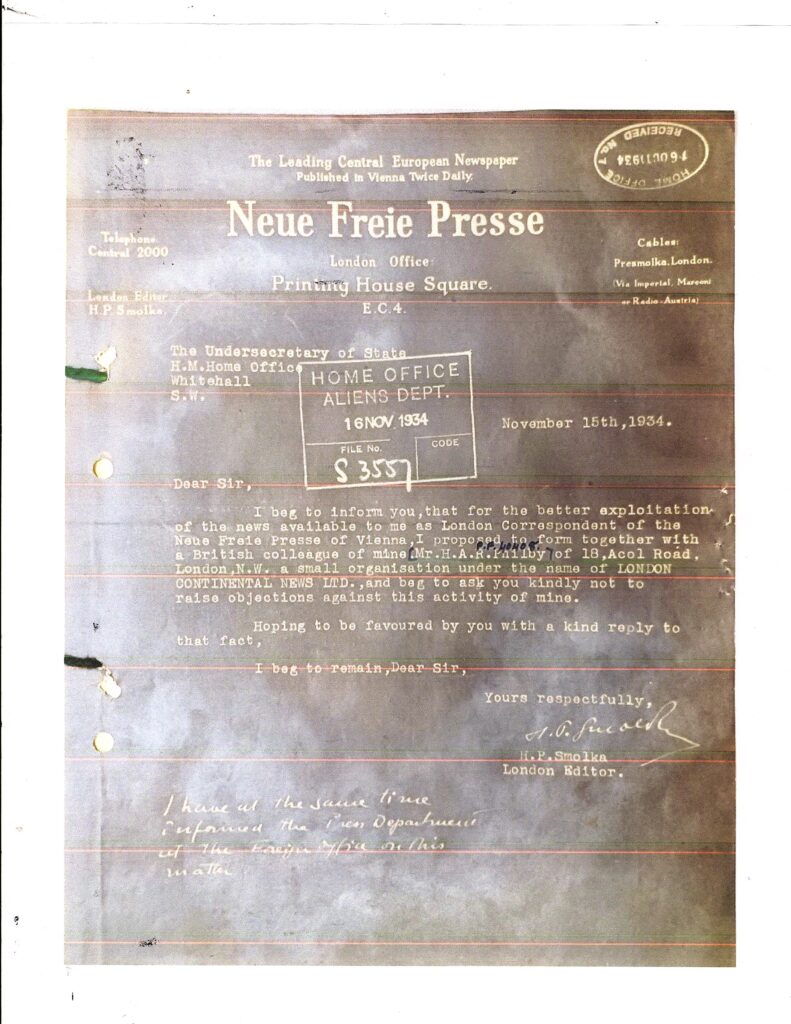
2. Was Kim Philby a Bigamist?
There once was a person from Lyme
Who married three wives at a time.
When asked: ‘Why a third?’,
He said: ‘One’s absurd,
And bigamy, sir, is a crime.’
(attributed to William Cosmo Monkhouse)
A brief synopsis of the saga of Kim Philby’s ‘divorce’, as conventionally represented, runs as follows: He failed to divorce Litzi when they drifted apart, even when he started cohabiting with Aileen Furse in 1940, and had children with her. In August 1946, he reputedly woke up to the idea that he should legitimize his relationship with Aileen, and confessed the existence of his marriage with Litzy to his former boss at MI6, Valentine Vivian. He subsequently contacted Litzy (who had left England by then), and gained her agreement to a divorce, which was finalized in Paris (or maybe Vienna) in early September. He married Aileen on September 25. Litzy was then free to marry Georg Honigmann, which, by most accounts – including the memoirs by their daughter-to-be, Barbara – took place later that year, or in early 1947. Yet records maintained by Barbara Honigmann’s extended family on the genealogical website, Geni, indicate that Litzy and Georg were ‘partners’, not ‘spouses’. Litzy’s Wikipedia entry states merely that she lived with Honigmann, with no mention of marriage. In his biography of Stewart Menzies, ‘C’, Anthony Cave-Brown wrote that Kim married Aileen bigamously, without offering evidence either way, or even investigating why, if he was correct, the events were not pursued by the authorities.
One of the most astonishing aspects of this case is the lack of curiosity on the part of those writers who have blandly accepted Philby’s account of the ‘divorce’, without any tangible evidence, and who have ignored the absurdities of the arrangements by which he gained his decree – which would presumably have been an essential piece of evidence for his marriage to Aileen. (Otherwise why did he bother? He had already lied to a colleague in MI6 that Litzy had been his ‘first wife’.) I have thus been drawn into the dark web of Geni, in an attempt to pin down the evidence that Georg and Litzy were only ‘partners’, not husband and wife. Of course, in principle, based on hearsay and memoirs, it is far easier to suggest that the couple were legally married than they were not, especially as the Berlin marriage records will not be released until eighty years after the event, thus in 2026 (or 2027), and the ‘fact’ of Kim’s marriage to Aileen would strongly suggest that he was a single man again at the time. When we can inspect those records, the matter should be settled one way or the other.
Geni is not wholly satisfactory. The data is maintained by a string of semi-anonymous characters, who apparently do not have to show their accreditation when they maintain genealogical information, are not required to identify sources, and all too often rely on Wikipedia for relevant ‘facts’. They offer email addresses, but often fall into desuetude, and do not respond to inquiries. Yet some valuable details can emerge. While I have not been able to get a response from the person responsible for the information concerning Barbara and her parents’ partnership, I have succeeded in exchanging messages with some genealogists and serious amateurs who have given me some important leads. As for Barbara herself, she is reported to dislike any ‘prying’ into her life, which I thought was a bit rich. After all, if you are going to try to draw in the public by writing very personal memoirs (Ein Kapitel aus meinem Leben, about her mother, and Georg, about her father) that contain multiple untruths and contradictions, you can hardly expect the intellectually curious to turn off their inquiries when matters become a little sensitive. It reminds me of Peter Cook, and his pastiche on Greta Garbo (‘Emma Bargo’), who goes around with a megaphone declaring ‘I Vant to be Alone!’. [see https://www.youtube.com/watch?v=qGVcgZkMxWk]
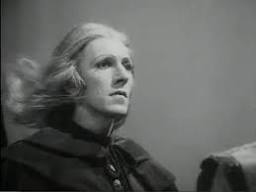
I have discovered some important facts. When I wrote about Georg’s cousins in last month’s posting, I assumed that Andreas and Johannes were the children of Georg’s brother Heinrich. But Heinrich died in World War I, unmarried, before the boys were born (and Barbara understated their ages, for some reason). On reinspecting Barbara’s text, I noticed that she had described Andreas as ‘ein Cousin zweiten Grades’, which can mean either ‘second cousin’, or ‘first cousin once removed’. The latter relationship turns out to be the correct one: Andreas and Johannes were Schuelers, the grand-children of Georg Senior’s (Georg’s father’s) sister Elise. Elise married Baruch Spitz, and their daughter, Hedwig, married Alfred Schueler. They had the two sons. Hedwig was thus Georg Junior’s first cousin. I also learned that Barbara Honigmann has two (unidentified) siblings, by all accounts also the children of Litzy and Georg, although the displayed genealogical information is very confusing. Barbara’s husband (Oppermann) is recorded on Wikipedia as having taken Barbara’s surname as his own, but one of her siblings also married an Oppermann while assuming the Honigmann surname. In contradiction of this intelligence, Barbara declared in her memoir that she was an only child – and she surely was the expert in this matter. I am not sure what is going on here.
When I tried to contact the primary author (Decker) of the posting about the ‘partnership’, however, I was thwarted, and received no response. On the other hand, I did manage to initiate an email exchange with two other members of the extended Honigmann clan, who were able to supply comprehensive details of the family tree (excluding living members, apart from Barbara). From open information, however, I was able to identify a great-nephew of Barbara, one Leon Rieding, who is apparently in agreement with Mr. Decker’s posting. I attempted to get in touch with him through a surrogate to determine whence comes his intelligence, but he was one of those shadowy figures who do not respond to emails.
And then I returned to Barbara’s memoir Ein Kapitel aus meinem Leben (A Chapter from My Life), and discovered some startling disclosures. She writes of her mother: “In marrying my father in Berlin, she evidently completely blocked out her second marriage with Philby, being content to produce the divorce decree from her first marriage. The requirement to produce a certificate of capacity to marry was certainly fulfilled in a formal fashion, but it was bogus.” She also reveals an extraordinary ‘admission’ from her mother, who told her: “It was in 1942, I think, that I divorced Kim, or perhaps in 1944 or 1945, unless it was in 1946. I have forgotten what year it was that we saw each other for the last time.” Barbara is stupefied that her mother cannot recall the date of her divorce: Litzy is clearly trying to cover up in some confusion, but all that she can add is that she cannot even recall the date when she divorced Georg, as if she suffered from amnesia in this department.
Later, Litzy tells her daughter that she left the UK for Paris ‘in the spring of 1946’ – definitely untrue – and made her way to Berlin. Yet she had to take a detour via Prague, where she met up with her schoolfriend Lotte, the wife of Smolka, before taking the train to Dresden. At no stage of this explanation does she make any reference to her divorce from Kim, in contrast to her husband’s very dramatic, though detail-free, narrative. It is quite incredible that she could have failed to recall such life-defining events if she had indeed managed to gain the divorce decree in Paris or Prague, and she tries on the pretense that the legal separation had taken place some time before.
Of course, the obvious place to gain their divorce would have been the city where they married – Vienna. Borovik, in The Philby Files, claimed that Kim saw Litzy in Vienna. And indeed, Kim has been recorded as making a secret visit there ‘after the war’. The infamous Note 19 in Chapter 1 of Gordon Corera’s Art of Betrayal cites the tape by Bruce Lockhart making a reference to Kim’s presence there, an item ‘since . . . withdrawn from the Imperial War Museum’. Yet Litzy made no mention of visiting Vienna, and the records discovered by British Military Intelligence in January 1952 (where they astonishingly refer to Litzy’s marriage to ‘Harold Adrian Russel’ on February 24, 1934) show no recognition of their subsequent divorce, and no knowledge of the couple since they left for England on April 28. If the divorce had been made official there, presumably MI6, as well as Kim and Litzy, would have found it useful to provide evidence.
These claims to Barbara about her divorce and subsequent ‘marriage’ to Georg are thus highly provocative. It would appear that Litzy maintained the fiction that her marriage to Honigmann took place, despite the frauds committed. Otherwise why would Barbara reveal such an unlikely tale? And why (and when) did Litzy confide this truth to her daughter? (I cannot believe that Georg was unaware of the lapse.) Thus we then have to consider the scenarios:
1) The authorities were convinced by the evidence, and approved the marriage, while Litzy and Georg were complicit in a bigamous arrangement, about which no one else knew until Barbara dropped her clumsy hints. Presumably Litzy would have had to show an ID at the ceremony, and her current British passport would have declared her to be a ‘Philby’: the methods of the East Berlin authorities are unknown by me. (How concerned they were about such bourgeois considerations is another matter, I suppose. If MI6 could prevail on a London registry office to connive at a bigamous marriage, I am sure that the KGB could do the same.) In that case, if a marriage was formalized, a ‘divorce’ could have been accepted in 1953, or whenever it was, but the deception would endure through George’s further two marriages.
2) The marriage was not allowed (or even attempted), and Georg and Litzy were indeed just ‘partners’ (as Mr. Decker indicates), but they were not punished for any attempted deception, since the KGB was partly responsible for the predicament they were in. Barbara was consequently misled. Thus, when the affair fell apart, Georg was free to re-marry, but Litzy was not. And that might explain her later very sentimental reflections on Kim, and her resistance to joining in matrimony with any of her several admirers, since she was still Kim’s legal wife.
I favour the second interpretation. The evidence I have assembled (the claims from Cave-Brown, the very improbable logistics, Litzy’s vagueness and selective amnesia over some of the major events in her life and her later nostalgia for Kim, the bold assertions on the Geni family tree, the nervousness in the Home Office and MI5 about Litzy’s possible return to the UK, and the Home Office’s apparent determination to keep the Honigmann file closed) suggests to me that the divorce never took place. And that has monumental implications for the Philby and Honigmann families.
Lastly, I reproduce an astonishing article (tracked down by one of my collaborators through the Geni link) from the Vienna press of May 1934, filled with untruths about the circumstances of Kim’s sojourn in Vienna, and obviously placed by MI6 in an attempt to distance Kim and Litzy from their communist actions, and present them as closely tied to Kim’s father, the fascist, Hitler sympathizer and Arabist Harry St. John Philby, while emphasizing Kim’s ‘aristocratic’ background. This is a story with enormous implications that I shall return to next month.
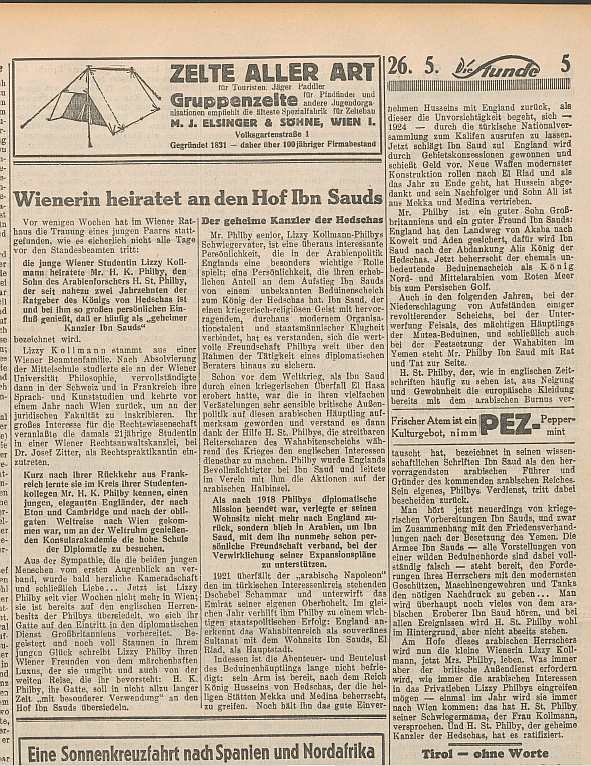
3. Hannah Coler’s ‘Cambridge 5’
Some coldspur readers may recall my distant and short-lived contact with the prickly and elusive historian Jonathan Haslam, and his subsequent disinclination to respond to my written letter during my investigations into ‘Gibby’s Spy’. I have discovered that he is now the partner of the German historian Karina Urbach, whose book Go-Betweens for Hitler I had enjoyed several years ago. I even exchanged emails with her afterwards (in 2014 and 2017), and have been able to retrieve from my personal computer archives our very positive conversations about the Hohenlohes, and my researches on Churchill, Halifax and Burgess. Urbach is definitely a class act. She and Haslam co-edited a book titled Secret Intelligence in the European States System, 1918-1989 that, I must confess, I have not yet read.
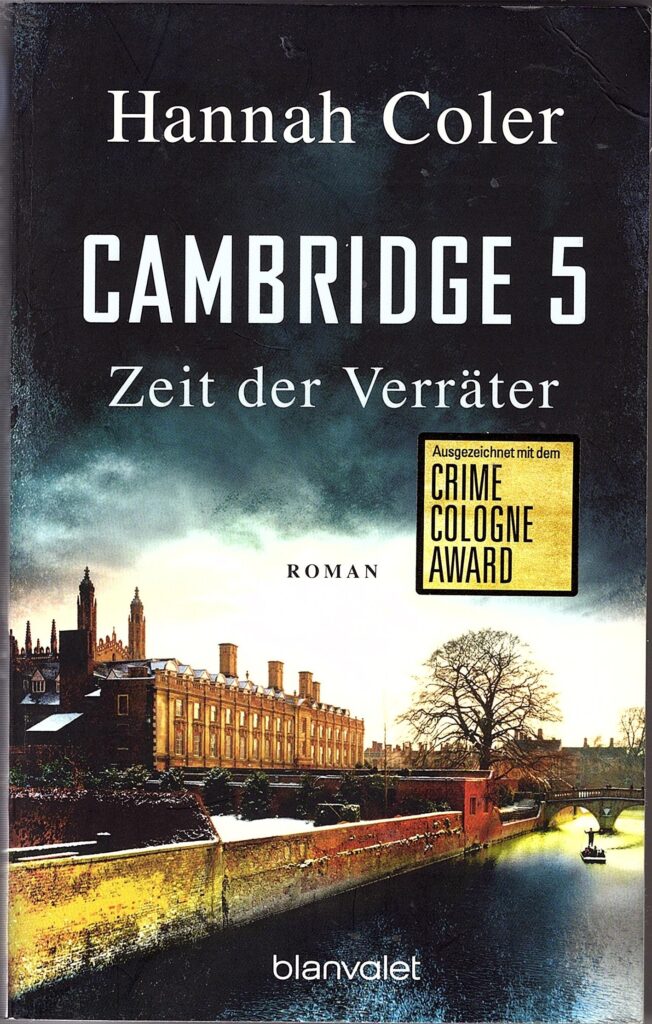
Somehow I discovered that Urbach had written a novel, in German, bearing the title Cambridge 5: Zeit fűr Verräter (‘Time for Traitors’), but appearing under the pseudonym ‘Hannah Coler’. The topic was clear: I had to read it. The book arrived, and I retrieved my 1968 German skills to work on it. Only when I was three-quarters of the way through its 400-odd pages did I learn – after inspecting Urbach’s Wikipedia page – that what appeared to be an English translation had been prepared and published! A search on amazon (not on ‘Coler’, but on ‘Urbach’) had come up with the rather mysterious title The Cambridge Five: A Captivating Guide to the Russian Spies in Britain Who Passed on Information to the Soviet Union During World War II, with the author’s name rather bizarrely offered as ‘Captivating History’. (I do not see how the ‘Urbach’ in the Search found its target.)
I am sure, however, that this is not the novel, but simply a potted guide, maybe based on the imaginary thesis on Philby written by Wera, one of the characters in the book. Large chunks of her work are ‘extracted’ in the book’s pages. I am not going to acquire the English book to prove my hypothesis. I am not sure why this enterprise was thought worthwhile: indeed the German texts presented could act as an informative guide to German readers who know no English, and have thus not been exposed to the wealth of books about the Five, but another publication in English about Philby would appear to have little new to offer.
But back to the novel. It really was quite enjoyable, mainly because Ms. Urbach is obviously very familiar with Cambridge, and the English scene in general, and writes with flair, humour, and a wry affection for the personalities and pretensions of those figures who coloured media and academic life in the early 2010s. The plot revolves around three generations of students: the Cambridge 5, their leftist successors, engaging in protests in the 1970s, and three doctoral students in 2014, working on their theses under one of the previous activists, the womanizer Professor Hunt. Hunt becomes involved in a murder mystery, since one of his former colleagues (and the father of one of the trio of doctoral candidates) is found stabbed to death in Hunt’s rooms at New College. Thus echoes of 1930s revolt, attachment to causes, recruitment by the Russians, betrayal and revenge reverberate across the three generations.
The main thread of the book is the idea that Wera, the German student (whose name echoes that of Urbach’s mother: the author also explains in a postscript that her elderly father had worked as an agent for the CIA) has selected as her thesis a detailed analysis of Kim Philby, and occupies the rooms at Trinity College that were once Philby’s. The novel is interspersed with chapters of her findings as they evolve, and as they are presented to her supervisor, Professor Hunt. She exploits the Mitrokhin Archive (with the help of a Russian girl called Polina), and is presented as revealing hitherto unknown ‘facts’ about Philby. This was, for me, the weakest part of the book, although I can imagine that German readers would be fascinated. The texts of the thesis are unannotated, and thus lack sources, and the ability of Wera to comprehend the multiple cultural and social aspects of the 1930s milieu is unexplained.
The sources for Urbach’s findings about Philby and his traitorous colleagues would appear to consist of the writings of Macintyre, Knightley, Modin, and Philby himself, as well as the usual suspects of background literature (e.g. Andrew, Costello, West, and her partner Haslam). She does also list Barbara Honigmann, but there appear no breakthrough insights. She lists nothing from the National Archives in her Sources, which is astonishing. Admittedly, the Flora Solomon file was released too late for the project, but the Honigmann and Tudor-Hart folders should have been inspected by the time Urbach wrote her book, and what little has been released about Philby’s interrogations in 1951 should also have provided a richer context.
Some early observations caught my eye. Hunt, who is initially very disdainful of Wera’s ability to shed any fresh light on the paradoxes of Philby’s career, is impressed by her spunk, ambition, and skills of observation. He gives her some advice on the research process. He is very disparaging about the role of authorized historians who are fed documents to analyze, and are thus manipulated. He encourages her to look for details that other historians might have overlooked, and advises her to learn Russian, so that she will not be reliant on translators who might deceive her.
All this was very close to my principles, as I have repeatedly written on coldspur, and I wondered whether this exchange was a key to the eventual plot, and resolution of the skullduggery to come. As it turned out, it was a red herring. But I was energized enough by what must be Urbach’s beliefs about ‘official’ historiography of intelligence matters to reach out to her by email, and draw attention to my recent articles on Philby, which I thought might throw Wera’s apparent ‘breakthrough’ up into the air. I sent a congratulatory and very amiable message to her. It was not rejected outright (as if her address were no longer valid), but in the six weeks since, I have received no acknowledgment or reply. I know that she now resides in Cambridge, England, ‘with her family’. I hope that Haslam is not influencing her modus operandi, but she now appears to have taken on the persona of a media celebrity who needs to be protected from the public at large. She has her own website (at https://karinaurbach.org.uk/ ), and the ‘Contact’ button directs potential communicants to her agent. My opinion of her has gone down.
4. The Rejuvenation of Dick Ellis
Over the years I have had dozens of exchanges – well over a hundred – with persons around the world who discovered coldspur, and had some observation or question for me. Apart from Henry Hardy (whom I actually approached early on in my researches) I have not met any of these people, but I appreciate you all. I have spoken on the telephone to merely two or three. Some disappear suddenly, and then reappear years later. Others appear to go off the radar, as if they had been trapped by the 21st-century equivalent of Radio Direction Funding – email surveillance. One or two, I have regretfully learned, have died. Many wish to remain anonymous. Each of them has idiosyncratic ways of communicating, and follows different email etiquette. I try to match them, but I find it strange that some ‘correspondents’, having received an encouraging reply from me, decline to acknowledge it. (If I have failed to respond to anyone trying to contact me, or not thanked a contact for a contribution, or have left a query hanging in the air, I apologize.)
After my recent book review of Jesse Fink’s Eagle in the Mirror, I received a series of emails pointing to useful material from someone with an email name of ‘Dr. Jonathon Empson’, who did not introduce himself, or describe his background, or explain why he was sending me the links. He sounded like an academic (rather than a medical practitioner), one who has studied intelligence matters, or even worked in such organizations. He drew attention to two of the well-known photographs of Ellis that appear in Fink’s book, suggesting that the subject had aged considerably between 1923 and 1927, when a photograph of him had been taken by the British Chamber of Commerce in Vienna. Readers can compare the two:

The Doctor merely observed that there was a ‘discernible difference’ between the two images, describing the second as follows: ‘a different person – haunted, and may hint to his first undeclared contact with an opposition service’. I do not believe he was suggesting that the photograph was actually of someone else. When Fink presented the second photograph, he simply noted that Ellis ‘had aged rapidly’. Yet it now occurs to me: can it really be the same person? Apart from the filling-out of the face, and the receding hairline, are the ears not markedly different?
And then there is a third photograph, also reproduced by Fink, taken at a wedding in London in 1933, six years later, with Dick Ellis on the right (see below). Has he not regained some of his youthful demeanor, with his face regaining its less fleshy shape? Fink does not comment on it. I sent an email to Fink just after I received the Doctor’s message, without mentioning the photographs, as I incidentally wanted to point out to him the fact that Ellis’s book on the League of Nations may have been written by the Communist Konni Zilliacus (Fink had referred to the article making the claim, but had not mentioned it in detail), and also to alert him to the fact that Jimmy Burns’s very poor new book on the insignificant Walter Bell, The Faithful Spy, contained excerpts of correspondence on Ellis that he would probably be interested in.

For several weeks I never heard back from Fink, so had not presented this enigma to him. I imagined that he was still upset over my review, as his post on coldspur suggests. And then, on December 14, I did receive a message from him: he had completely overlooked my message in his inbox, so I was able to rewrite this paragraph in time. As for the Doctor (whose name is almost certainly a pseudonym), I do request of my informants that they identify themselves properly, although I of course always respect any desires for secrecy and confidentiality if their position requires it. One primary rule of intelligence gathering is to try to verify the reliability of a source. The Doctor, despite his flattering remarks and apparently astute observations, is an obvious ‘dangle’, and an irritation. At the same time, I somewhat wryly deemed that Fink was perhaps a double agent, who couldn’t work out whether he should be working for the Potboilers or for the Scholars, but professional relations between us have been restored, and we have discussed a quite shameful review of Fink’s book by Nigel West in The Journal of Intelligence and Counter-Intelligence.
But does anyone else have an opinion about the puzzling rejuvenation of Dick Ellis? Recall that, when discussing the testimony of Protze, Kim Philby had stated that the Ellis whom Protze had encountered was shown to be ‘(a) a White Russian and not an Englishman, and (b) a fraud and a forger’. Answers on a postcard, please, or via a posting on coldspur, or an email to antonypercy@aol.com.
5. The Book Review Magazines
I subscribe to four journals dedicated primarily to reviewing books, Literary Review, the Times Literary Supplement, the New York Review of Books, and the London Review of Books. I occasionally write letters to the Editors of each, some of which I have reproduced on coldspur, and the writing of this section has been prompted by the non-publication of a recent letter by me.
The best of the four is undoubtedly Literary Review. It offers reviews of a wide range of books across many subjects, both fiction and non-fiction. The reviewers are almost always very well qualified, and directed to write concise and compact critiques of the volumes selected. They are obviously encouraged to give unfiltered opinions about a book’s merits and flaws, such as the novelty of its research, or its overlooking of important sources. There is no room for them to expand on all they know about the subject, and then briefly mention the writer towards the end, which is a policy some other magazines appear to promote. In addition, there is no apparent log-rolling, although I do find a little hypocritical the semi-apologies for expressed ‘quibbles’ and ‘niggles’ when they list mistakes they have found. Its Letters section is its weakest part, publishing mostly uncontroversial and trivial comments – but it allocates very little space to this intrinsically rewarding exercise. I wish all the magazines under review would provide more space for readers’ letters, and also offer more details about the qualifications of the reviewers it engages.
The Times Literary Supplement comes in second ahead of the two Book Reviews. It maintains a weekly schedule, and offers a fairly broad array of topic headings, with some reviews much shorter than others, although it sometime strains to find capable objective reviewers in all the domains it covers, and is liable to offer weak assessments based on good fellowship or potential mutual admiration. It does not take itself too seriously: it provides a full page for readers’ letters, although what is published tends to be on the dull side, dominated by sometimes pedantic corrections from around the world, and frequently including ripostes from authors who feel that they have been short-changed or misrepresented in earlier reviews. It regularly covers film, television and other media, which to me is supererogatory, and outside its mission. The style of the reviews is overall lively and engaging: the editor since 2020, Martin Ivens (who formerly was editor of the Sunday Times), overall maintains an expert but ironic touch.
I place the fortnightly New York Review of Books above its London cousin because, while they both occasionally (but not frequently enough, in my opinion) publish outstanding critical reviews, and both select too many very obscure and marginal items, the NYRB does not contain as much political polemic as does the LRB. It covers a gratifying number of books pertaining to Europe, which is important, as I regret my interest in USA history and political affairs is not as great as it should be. I always welcome Ferdinand Mount and Geoffrey Wheatcroft, as well as Marina Warner and Miranda Seymour, who are regular though infrequent contributors: in a brief column in the TLS on October 20, on the achievement of the NYRB’s sixtieth anniversary, recognition of the British influence on the magazine was stated. (I was also pleased to see that the editor, Emily Greenhouse, is allergic to the expression ‘the lived experience’.) The Letters section is, however, the weakest of all four, dedicated primarily to long and fairly abstruse debates between authors and critics.
So why do I subscribe to the London Review of Books (also a fortnightly)? It is sadly still in the shadow of the rather dire Mary-Kay Wilmers (her of the Eitingon family), who, having retired from the editorship a year or so go, still endures in an advisory capacity as ‘Consulting Editor’. But her enthusiasm for very long leftist essays (and her taste, presumably, for really dreadful ‘poetry’) remains, with such as Perry Anderson to the fore among several writers, often from Embankment universities, who indulge themselves mostly in Pikettyish criticisms of free enterprise – presented often as the phenomenon of ‘late-stage capitalism’. Deploring Trump has also been a popular hobbyhorse in articles (not book-reviews!), and I have asked the editors why I should be paying for such obsessions when the magazine is supposed to be a London Review of Books?
I have received no answer.
Yet occasionally an issue of the LRB will be so spectacular that it makes the annual subscription worthwhile, such as that of early October this year, which featured a superbly entertaining review by Lorna Finlayson on some books on animal rights and speciesism (by Peter Singer and Martha Nussbaum), as well as an outstanding review of Orwell material by Colin Burrow. Thus I persevere, bypassing some very ordinary submissions, waiting for the next masterpiece. Moreover, one aspect of the LRB amazes me: it employs a simply gigantic staff, which it proudly lists on its title page. It puts the respective display by the TLS to shame (see images below). How on earth a straightforward literary magazine can afford to sustain all these positions is quite remarkable – and these are only the heads of departments. Could they not double up on some of these duties? And what do all these people do in the afternoons? One wonders whether it is all being subsidized by some generous benefactor, such as the Soros foundation. If it were, I am sure the truth would have come out, but it is all very mysterious to me.


This is all as way of introduction to another unpublished letter. In August, the TLS published a review by a Professor Krishnan Kumar titled This Is Britain. I do not need to quote any part of it, as I believe the letter I sent to the Editor adequately reflects the problem. It ran as follows:
I wonder whether I was the only reader to be profoundly disturbed by some of Professor Kumar’s remarks in his review of books on the vexed issue of ‘race’ (‘This is Britain’, August 11). Most alarming was his statement that, in Britain, ‘mixed-race people are now the fastest-growing ethnic group’. The implication behind this assertion is that each partner in a ‘mixed-race’ marriage (or relationship) must be of ‘unmixed’ or ‘pure’ race, which is not only nonsensical, but also deeply insulting, by resuscitating a doctrine that has been clearly discredited. Kumar compounds his error by classifying such pairs as an ‘ethnic group’, which, given the undeniable different backgrounds of the members, makes the integrity of that highly questionable concept even more absurd.
He makes further categorical mistakes, such as reinforcing the notion that it makes sense to collect ‘Asians’ in a group, and make stereotypical observations about them (‘they are less inclined to intermarry’), as if it made sense to consider immigrants from Iran to Japan, and everywhere in between, as a viable entity worth studying, and one that displayed consistent behavioural characteristics.
It is sad to see how the sociological academics and the census bureaucrats, initially in the USA, but now, apparently, in Britain, too, have ousted the anthropologists and evolutionary biologists in occupying the spheres of social influence. Their obsession with racial classification has encouraged millions to believe that their ‘identity’ can be defined primarily by some tribal heritage, when all it does is to encourage stereotypes, and to promote some unscientific thinking.
My letter was not published. Thus is this sub-Marxian claptrap further established. Kumar, the current Professor of Sociology at the University of Virginia, was educated at Cambridge University and took his postgraduate degree at the London School of Economics. He presumably developed his ideas when he was studying for his doctorate, and encountered no resistance. He was then appointed Professor of Social and Political Thought at the University of Kent, and was able to guide the curriculum and modes of thinking. Since 1971, he has published several books, which his academic colleagues probably praised. Having been away from Britain for twenty years, he was invited to submit a review of three books on ‘race’ and ‘race relations’, and the Editor was either unable or unwilling to challenge him on the primitive and undisciplined points he made. When these absurd ideas, with their outrageous definitions, appeared in print, several readers may have been shocked, but I may have been the only subscriber to take the trouble to write. And the editor decided to ignore my letter.
In such a fashion do insidious and dangerously divisive ideas become accepted. The cult of defining everyone by the so-called ethnic groups or classes that they are claimed to have belonged to since birth, inheriting the victim or oppressor status of their predecessors, is rammed home without any subtlety or scientific understanding. And, as I was writing this piece, I came across a relevant passage by Lionel Trilling (whose windy abstractions and vague generalisations I am mostly not a fan of) in The Sense of the Past (1942), published in The Liberal Imagination:
This is the great vice of academicism, that it is concerned with ideas rather than with thinking, and now the errors of academicism do not stay in the academy; they make their way into the world, and what begins as a failure of perception among intellectual specialists finds its fulfillment in policy and action.
Soon after, I read the following, written by John Gay in his new book The New Leviathans, and cited by John Banville in his NYRB review of December 21:
In schools and universities, education inculcates conformity with the ruling progressive ideology. The arts are judged by whether they serve approved political goals. Dissidents from orthodoxies on race, gender and empire find their careers terminated and their public lives erased. This repression is not the work of governments. The ruling catechisms are formulated and enforced by civil society.
If I had not just passed my seventy-seventh birthday, I might get really steamed up about this travesty. Yet it appears I have allies. On the other hand, maybe I would gain greater attention if I wrote on Christ Church notepaper: the first letter published in the December 15 issue of the TLS was written by Richard Swinburne, from Oriel College, and contains the following nonsense:
Of course ‘an extreme improbability is not an impossibility’, as Edward Greenwood writes (Letters, December 8); but the issue is whether it is rational to believe (in the absence of contrary evidence) that an event (such as the universe being so precisely fine-tuned for life) that would be extremely improbable if it had occurred without a cause, did not have a cause. We should only do this if we cannot postulate a simple explanation of it. But in the case of the universe, we can postulate a very simple explanation, that it was caused by a very simple cause (God, one entity with one essential property, omnipotence), which, I have argued, would make its occurrence probable.
Between superstition and pseudo-science lies sense.
6. Research Agenda
At the beginning of the year, I never expected to be spending so much time on Kim Philby and his various associates, and thus several projects that I had planned have been deferred. Yet they remain on my active list, and I make notes occasionally in preparation for tackling such themes seriously when a vacant spot in the docket turns up.
There is still some unfinished business concerning the Philby investigations. I want to explore more thoroughly where Milmo derived his facts about Kim and Litzy in his December 1951 report, and why White failed to disclose them in his report issued just beforehand. I need to unravel the very strange ‘Stevenson’ business in the Tudor-Hart files, and try to ascertain whether the mystery informant was indeed Graham Greene. A major new thrust will be an in-depth examination of the files on Peter Smollett/Smolka. A cursory look – supplemented by research into Graham Greene, and his dealings with Smolka in Vienna in 1948 – has convinced me that several major anomalies exist in the relationship between Philby and Smollett, and these have been glossed over in all the literature. I need to explore exactly what MI5 knew about Guy Burgess before the notorious escape, and analyze closely the post-mortems that occurred. My analysis of the complete Burgess trove at Kew needs to be completed, and the recently released Rothschild files are straining for my attention. I also have a daunting set of Russian books on intelligence lying on a table, waiting to be tackled.
Matters of peripheral interest endure. I want to compare Chapman Pincher’s fanciful accounts of what Roger Hollis was allegedly doing in Soviet counter-espionage after the war with the more mundane accounts that can be found in source records, such as in the diaries of Guy Liddell, who sprinkles his journals with valuable tidbits concerning the actions of Roger (including his frequent periods of leave and sickness). I’d like to engage in a thorough analysis of the phenomenon of ‘double agents’, and to produce examples from a broad set of initiatives beyond the rather hackneyed and mis-represented set of that species, namely the ‘Abwehr’ agents manipulated to deceive the Germans over the Normandy crossings. I want to investigate the controversies and lawsuits that challenged the first appearance of M. R. D. Foot’s SOE in France. [This topic has been partially addressed by Christopher J. Murphy in a recent article in Intelligence and National Security, published on-line on December 22 at https://www.tandfonline.com/doi/full/10.1080/02684527.2023.2291873 , but I believe Murphy has refrained from touching the serious, more long-lasting, issues associated with the debacle.] Now that I have acquired the files of the prominent Sicherheitsdienst officers who were interrogated after the war, I also want to develop a more rigorous schematic of the activities of Dick Ellis, and what he was claimed to get up to, probably by scouring the original German transcripts of the interrogations.
Other projects go some way back. I have always wanted to understand better exactly what codebooks John Tiltman managed to recover from Petsamo, and when, how they were passed on to the Americans, and how they helped the VENONA project. One longstanding exercise is an investigation into the inquiries that Alan Foote made into the Gouzenko affair, and the connections between the Canadian spies and the Rote Drei in Switzerland. I have not yet studied closely the massive set of Petrov files, which I believe may have much to reveal about Soviet techniques, and possible links to agents who have not been properly identified. I want to examine the cables that were sent by MI6 and the Embassy from Kuibyshev and Moscow in 1943-44, as I believe that George Graham had passed over the cipher- and code-books, and the information transmitted in such telegrams may shed a shocking light on how much Stalin knew about Allied tactics. I also want to pick up my story about the ‘heretic’ communists who fought for the Nationalists in the Spanish Civil war, and then apparently switched their allegiance, such as Humphrey Slater.
Lastly, I have a few more administrative projects to accomplish. I plan to finish my topographical guide to the coldspur collection, and publish it early next year. I’d like to spend some more serious effort on the post-war organization of MI5, which has not received the attention it deserves. Over time, I shall flesh out my spreadsheet of missing cross-references of MI5 Personal Files, offer some sort of chronology, and, maybe with the help of recently photographed files concerning the Registry, describe the processes by which it was maintained.
I thus have plenty to occupy me for a while, and I shall be a much older man than I am now when I complete this assignment – if ever! I am always eager to hear from coldspur readers of other topics worth investigating, as I may find them automatically engaging and thus worthy of elevation in priorities (such as Jesse Fink and his study of Dick Ellis), but I may have to decline. Of course, if Calder Walton wants me to contribute something to his much-awaited three-volume Cambridge History of Espionage and Intelligence, of which he is General Editor, he only has to contact me, and I shall name my fee . . .
STOP PRESS: As I was tidying up this piece on December 29, I was alerted to a large new release of files from The National Archives, involving much on the ‘Spycatcher’ case, as well as on Joan Miller’s One Girl’s War, and on Victor Rothschild’s grumblings. From a quick inspection the Joan Miller material looks very disappointing, but it will mean a lot more work – and I haven’t yet studied the already released Rothschild files. Maybe I need to hire a research assistant, but, hang on, that would be contrary to my principles . . . (I note in my Commonplace file this month an incident where a Professor tried to blame an example of plagiarism on sloppy work by his research assistants. Tsk! Tsk!)
7. ‘The Airmen Who Died Twice’
A few correspondents have asked me what happened to this project (see https://coldspur.com/special-bulletin-the-airmen-who-died-twice/ ). My colleague Nigel Austin and I were rattling along quite well, having completed six chapters of a planned ten, when Nigel sadly succumbed to some personal problems, and was consequently unable to fulfill his side of the research and writing. I waited patiently for many months, but my interest (alongside my ability to understand and explain work already done) was starting to flag, so I had to let him know that I would have to complete the project by myself. It is a fascinating and ground-breaking story, and I am very keen to see it published.
One of the major chapters to be written, however, concerns the state of Norwegian Resistance during World War II, the political tensions between the different factions, and how Stalin hoped to exploit them. This is not a topic that I am intimately familiar with, and I have performed very little of my own research. I am thus going to have to dedicate a large amount of time in between my other monthly projects to attempt to gain some kind of expertise over the subject-matter. I do not want to start publishing earlier segments (which are in good shape, I believe) until I am confident that the complete story has coherence and quality, and that it is properly defensible. When I am ready, I plan to publish a couple of chapters at the mid-point of each month, as a contrast to the monthly bulletins, in a way that will allow the narrative to have some momentum. I’ll report again in a month or two.
8. ‘This I Cannot Forget’

One of the most moving books that I read this year was the memoir by Anna Larina, the widow of Nikolai Bukharin, who was executed after one of Stalin’s show trials in 1938. Larina was twenty-six years younger than Bukharin, but had known him since she was a child, since her step-father was a colleague of Bukharin’s in early Bolshevik days. She and her husband knew that the inevitable would happen as the noose tightened, and previous friends began to denounce Bukharin for bogus plots to re-install capitalism and assassinate Stalin. Before the trial, she was exiled, with her infant son sent to a children’s home, then learned of her husband’s death, was interrogated and incarcerated in prison-camps, and was fortunate not to have been executed herself by the NKVD.
Before he was arrested, Bukharin managed to persuade his wife to learn by heart a testimony protesting his innocence, something she repeated to herself every day, occasionally committing it to paper, but each time destroying it because of its incriminating implications for her. Eventually, after Stain’s death, and Khrushchev’s ‘secret’ 1956 speech denouncing the dictator and his crimes, and the relative Thaw that followed, Larina in 1961 delivered the testimony to the Central Committee of the Communist Party, hoping that it would be published. It did not appear until 1988.
I had conveniently seen Bukharin only as a noble victim, someone who had had the guts to stand up to Stalin, and to attempt to moderate such disasters as the forced collectivization of the peasants, someone who had tried to put a human face on communism. Stalin never forgot a slight, or a challenge, and had planned the murder of those who had ever disagreed with him, or stood in his way, over many years, manipulating them at his will. His victims would appeal to him, stupidly imagining that it was the NKVD that was at fault, when in fact it was merely a creature carrying out his bidding.
And then I read Bukharin’s testament in Larina’s book. An early paragraph runs as follows:
Dzerzhinsky is no more; the wonderful traditions of the Cheka have gradually receded into the past, those traditions by which the revolutionary idea governed all its actions, justified cruelty towards enemies, safeguarded the state against any counter-revolution. For this reason, the organs of the Cheka won a special trust, a special honor, an authority and respect.
Bukharin went on to contrast the nobility of the Cheka with the ‘degenerate and dissolute organs of the NKVD’. Yet these are not the words of a humanist communist: they reflect the opinions of a bloodthirsty and vengeful Bolshevik, ready to approve the extermination of all ‘class enemies’, including the barbarous treatment of the protestors at the Savvatievsky monastery. For that is what the Cheka, with its ‘wonderful traditions’, was under Lenin – an executor of terrorism and persecution for its own sake, with anyone who showed the smallest sign of ‘privilege’, from Boy Scout medals to aristocratic background, as someone worthy of being exterminated. Any sympathy I had had for Bukharin instantly disappeared.
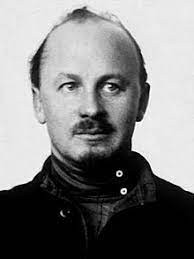
I wrote about the horrors of the Red Terror last year, in my review of books by Antony Beevor and Donald Rayfield. And I was recently exposed to a personal account of exposure to it when I read The Unmaking of a Russian, by Nicholas Wreden. (I bought a copy of a 1935 first edition of this work, signed by the author, for $4 in a second-hand bookstore a few years ago, but had never got round to reading it until I catalogued it in ‘LibraryThing’.) Wreden offers a fascinating description of the chaos of Petrograd in 1918, how ‘enemies of the people’ were summarily executed by the Cheka, and his narrow escapes from such a fate. He also has a gripping story to tell about fighting for the Whites in Estonia, before he manages to gain a retreat to Denmark. Ironically, from his eventual seclusion in the United States, he saw the NKVD on the road to reform by the early nineteen-thirties – an opinion directly opposed to that of Bukharin.
Remarkably, only one of the quoted letters from readers reacting to Larina’s publication in Znamya in 1988 displayed the same reaction that I had. Professor Yevgeny Stanislavsky, after suggesting that all those who had facilitated Stalin’s rise to power were themselves guilty, wrote: It occurs to me that if we had not had the most brutal so-called Red Terror immediately after October [1917], when we exterminated the better part of the Russian intelligentsia or forced it to abandon Russia, and simultaneously exterminated or expelled the technical specialists, the progressively minded bourgeoisie, when we destroyed anyone who was ‘not with us’, when we savagely shot the entire family of Romanovs, including the children, if we had not had that, we would not have had Stalinism.
He finished his letter by writing:
But reading the memoirs of victims of Stalin’s repression, I feel my blood ‘run cold’ and involuntarily there come to mind the atrocities of the German fascists, whom we properly judged (alive and dead) with the full severity of the law.
Well said, Professor.
9. J. B. Priestley’s ‘English Journey’
This summer I read J. B. Priestley’s English Journey. I had acquired a handsome Folio Society edition some years back, enhanced by some period photographs of the time, and an introduction by Margaret Drabble. Priestley is an author who seemed to go out of favour in the latter half of the twentieth century, although there has been a recent revival. I regret that I have read very few of his other works, although my father must have been an enthusiast in the 1930 and 1940s, as I recall that he had a prominent copy of J. W. Dunne’s Experiment with Time lying around the house, as well as editions of Priestley’s ‘time’ plays that were influenced by it.

A very clear recollection of listening to a radio version of Priestley’s An Inspector Calls stays with me, however. It must have been in about 1960 (I can find no record or cast-list on the Web), and I was enthralled. My younger brother, Michael, my mother, and I listened to it on an evening when my father was out at some committee meeting: I was not only captivated by the plot, but recalled how my mother instructed her two boys not to inform our father that we had listened to it. She did not explicitly say why, but, since the play involved rape, prostitution and alcoholism, it was very clear what the reason was. Those were not subjects that youngsters in 1960 should have been exposed to, and she would have been criticized for allowing us to listen in. Nowadays, I notice, the play is a GCSE set text.
I was astounded to learn that An Inspector Calls was first produced on stage in Moscow in August 1945, purportedly on the grounds that no theatre in England was available for staging it. I find that hard to believe, and it was a very foolish decision by Priestley, about whom suspicions of communist sympathies were immediately expressed. I noticed also that, in his recent sequel to his biography of John le Carré, The Secret Life of John le Carré, Adam Sisman records his subject’s nervousness about the role of his biographer. Le Carré had written to his brother, Tony, that it was odd ‘to have an “Inspector Calls” in one’s life, going round ringing doorbells from one’s past, & not always coming up with very edifying results . . .’
And then, while I was ready to complete the writing of this month’s edition of coldspur, I came across during a book-cataloguing stint a copy of Priestley’s Margin Released, in a black faux leather edition published by Heron Books in 1962. It has a price of £2 inside, so I must have bought it in England, but had never read it. It is subtitled ‘A Writer’s Reminiscences and Reflections’, and I have enjoyed fewer books more this year. Priestley is opinionated, but engaging, unpretentious, and eminently sensible, and writes in flawless English about his experiences in various fields of writing. Occasionally he is pompous and deceptive. He gives no account of his lawsuit for libel against Graham Greene, about which I read in Norman Sherry’s biography of the rival writer. On page 63 he offered the following insight, however: “Managers who were obdurate if the mill girls wanted another shilling a week could be found in distant pubs turning the prettiest and weakest of them into tarts. (Over thirty years later I made some use of these discoveries in a play, An Inspector Calls, set in 1912.)”
To return to my main topic: English Journey is a wonderfully crafted portrait of a country just starting to emerge from the worst of the Depression, published in 1934, and Priestley’s only rarely sinks into sentimentality. As a proud Yorkshireman, he was distressed at the apparent wastage of human capability that was evident from wide scale unemployment, but he admired the resilience of the affected communities that he encountered, with a familiar divide affecting the North and The South (where light industry was starting to take off). His socialism was obvious, but it was never dogmatic, and he was clear that the rigours and cruelties of Communism should never be part of any political response. His love of, and appreciation for, the countryside, as well as his delight in literature and music, are always apparent. Towards the end, he becomes somewhat repetitive, and occasionally maudlin, but I found the book very evocative of a fascinating period in English social history.
1933 had been a critical year for Europe. Hitler had come to power, and banned the Communist Party. Many of its members fled to the Soviet Union: most of them were later shot by Stalin. Stalin himself had become emboldened by his ability to endure unchallenged the horrors of dekulakization and the Ukrainian famine (the Holodomor) to prepare for a fresh series of purges, starting with the assassination of Kirov. Just as Britain started to crawl out of its slump, Kim Philby decided to throw in his lot with the Communist horror. English Journey remains a timely contrasting perspective.
10. The coldspur Archive
I am happy to report that I have signed an agreement with an academic institution that commits me to entrusting to it my library and archive, with the university allocating a separate space for my collection, and providing indexing and electronic gateway access. I look forward to providing more detail about this arrangement early next year.
The good news is that I now have a home for my library without it’s being broken up and its contents dispersed, or even destroyed. I believe the accumulated volumes are so much more valuable as a unit, and that my collection constitutes a unique set of books on twentieth-century history and literature. The bad news is that at some stage in the next few years I shall be deprived of instant access to my non-electronic resources. Thus, with a full agenda of research still to be executed, I may have to re-assess my plans!
Meanwhile, I continue with my project to record every volume (or, at least, all those books that will be of interest for the Special Collection) on LibraryThing for eventual export to the university authorities. I have now started a routine whereby, every Sunday morning, I spend a couple of hours cataloguing another hundred books, and, as of this date, have entered about 2,200 volumes. Several more months of work await me . . .
11. Mental Health
A couple of months ago I underwent my annual medical check-up, and shortly afterwards received an invoice from my doctor. It was not a large one, for an amount not covered my Medicare, but I was startled to read a couple of line items in the statement. The listing describes the treatment, the standard fee that the doctor would charge for someone uninsured (‘Initial Cost’), the adjustment to reflect the fee agreed with Medicare (or other insurance provider, presumably) for the treatment (‘Insurance Adjustment’), the amount actually reimbursed to the doctor (‘Insurance Paid’) and any remaining amount owed by the patient (‘You owe’.)

As can be seen my treatment included a ‘Medicare Annual Depression Screen’, estimated to take 5-15 minutes, and a ‘Medicare Annual Alcohol Misuse Screening’, also 5-15 minutes. I recall telling the nurse that I enjoyed one glass of white wine a day (I could have lied, of course), and discussing with the doctor for a couple of minutes what depressing times we live in, what with tribal conflicts around the world, Trump, Putin, Xi, Netanyahu and other monsters, as well as the challenges of dealing with Greta Thunberg and Sam Bankman-Fried. I thus thought that this allocation was a bit excessive. After all, what would anyone do about my ‘depression’? The fact is that everyone seems to be concerned about ‘mental health’ these days, and media icons even self-diagnose, as if they were quite competent in distinguishing between various forms of mental stability or instability. Yet anxiety, grief, even despair, are part and parcel of human existence, and, if one is not allowed to feel depressed occasionally about the reality and prospects of old age, then the world has come to a pretty pass. I thought of Hugh Kingsmill’s parody of A. E. Housman:
What? Still alive at twenty-two?
A fine, upstanding youth like you.
I suppose the authorities at Medicare need to be on the alert lest I convert any dire thoughts into harmful actions against my fellow-citizens, but this whole process appears to me at a piece of bureaucracy run amok. Plus it is deceitful. The doctor was paid for processes that were completed in a minute or two. When I paid my bill, I suggested to him that we drop these ‘screenings’ next year, and divert to those who truly need help the taxpayers’ $40 it will probably cost by then. As for my predicament, as Mona Lott said in the World War 2 wireless series It’s That Man Again: “It’s being so cheerful that keeps me going.”
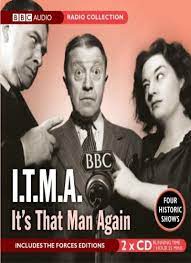
12. Coffeehouse Talk
Some time earlier this month, I was sitting in one of Wilmington’s more fashionable coffee-houses, when I couldn’t help overhearing a monologue from a woman at the next table. I made a few mental notes on what she was saying to her companion . . . .
“I think that everyone should have access to free child-care staffed by competent professionals who probably don’t have children of their own to care for so that all can undertake safe, well-paid and fulfilling stress-free jobs that allow them to stay out of poverty, and live in a solar-powered home in a crime-free and multi-ethnic neighborhood, close to good schools with excellent teacher quality and teacher-to-student ratios, while not actually depriving anyone else from an underprivileged minority of the employment opportunity, and should be able to enjoy healthy foods, the cultivation of which does not require the exploitation of the labor of any children or disadvantaged persons, as well as enough material goods that also do not derive from any similar exploitation, and certainly did not in their manufacture cause any environmental degradation, or challenge the survival of any threatened species, or damage to a World Heritage site, or harm any local cultural traditions that should nevertheless evolve to be respectful of women’s and minority rights (especially of the LBGTQ community), and be able to enjoy the occasional holiday abroad while maintaining a low carbon footprint, thus without negatively affecting climate change (although I worry about the enormous demands for water that converting airplanes to run on ethanol will cause), as well as having free access to first-rate medical care, including the availability of a cardiologist and endocrinologist within a twenty-minute drive, using suitably qualified immigrants if necessary while not exploiting anybody and not depriving underdeveloped or developing countries of the home-grown skills they need to emerge from poverty (in a way that avoids the perennial social injustices and ills of developed countries), and enjoy the benefits of a well-staffed care-home nearby, subsidised by the government, so that their aged parents can be looked after by dedicated carers, but can be visited regularly at weekends, and that their investments for their own retirement income grow regularly, with the companies they own shares in making satisfactory (but not excessive) profits while pleasing all their ‘stakeholders’ and engaging in sustainable business models without having to behave in a predatory manner by underpaying their workers or indulging in practices that might harm the planet or contribute to global warming, and can use an eco-friendly car to exercise their right to explore the country and visit protected national parks without interfering with the rights of indigenous peoples to indulge in traditional practices (that may in fact be harmful to them, and in poor taste), or worrying whether such areas in other countries where the laws are less restrictive will have to be exploited for the rare earths that have to be mined for the construction of the batteries needed for such vehicles, or that the surveys that have to be carried out for offshore wind farms will not harm the fragile whale populations, and that their implementation will not require excessive use of energy and steel, or result in massive blots on the landscape, or damage populations of any rare bird species, or that the mining of cobalt, graphite and other elements required to manufacture such items will not cause environmental devastation, civic discord, or harm to any tribal heritage (although the whole notion of tribes that have to stay on their reservations and marry within their own community in order to preserve their tribal identity is a deeply troubling one for any progressive and emancipated thinker . . . and were you aware that many of the Cherokee Indians on the protected reservations are not Cherokees at all, but black slaves who were captured ? . . .)”
I had heard enough. I drank up my Reserve Hazelnut Bianco Latte and left.
Latest Commonplace entries can be viewed here.


